Cut into Fingernail: Essential First Aid Guide for Nail Injuries
What are the crucial steps for treating a cut fingernail. How can you prevent infection after a nail injury. When should you seek medical attention for a damaged nail. What are the best practices for nail injury aftercare.
Understanding Nail Injuries: Types and Severity
Nail injuries can range from minor cuts to severe trauma. Understanding the type and severity of the injury is crucial for proper treatment. Common nail injuries include:
- Cuts or lacerations
- Crushing injuries
- Avulsions (partial or complete nail removal)
- Subungual hematomas (blood under the nail)
The severity of a nail injury depends on factors such as the depth of the wound, involvement of surrounding tissues, and the extent of nail damage. Recognizing these aspects helps determine the appropriate course of action.
When to Seek Immediate Medical Attention
In some cases, nail injuries require prompt medical intervention. You should call 911 or seek immediate medical care if:
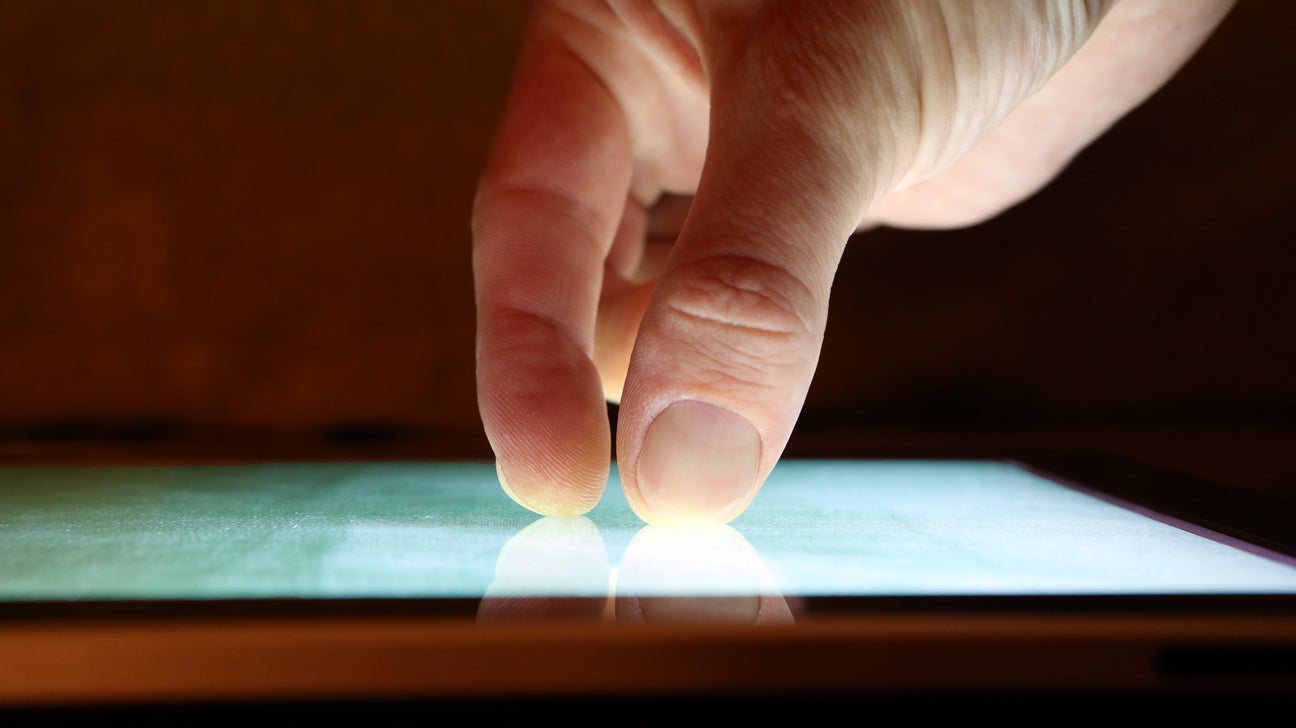
- The fingertip or toe has been partially or completely amputated
- Major bleeding persists after 10 minutes of direct pressure
- The finger or toe appears deformed, indicating a possible fracture or dislocation
- You’re unable to straighten or bend the affected finger normally
- The wound is deep or long enough to potentially require stitches
- A bruise under the nail covers more than a quarter of the nail surface
- There’s intense, continuing pain
- The nail is completely torn off or partially detached due to a crushing injury or cut
Immediate First Aid for Nail Injuries
When faced with a nail injury, prompt and proper first aid can prevent complications and promote healing. Here are the essential steps to take:
Step 1: Control Bleeding
How do you stop bleeding from a nail injury? Apply direct, firm pressure to the wound using a clean cloth or sterile gauze. Maintain pressure for at least 10 minutes without lifting the cloth to check the wound. If bleeding persists after this time, seek medical attention.

Step 2: Clean the Wound
Proper wound cleaning is crucial to prevent infection. Gently wash the injured area with mild soap and warm water. If the nail is torn, carefully trim any rough edges using sterile scissors to prevent further injury. This step helps create a clean environment for healing.
Step 3: Apply Antibiotic Ointment
After cleaning, apply a thin layer of over-the-counter antibiotic ointment to the wound. This helps prevent infection and keeps the area moist, which can promote faster healing.
Step 4: Bandage the Injury
Cover the wound with a sterile adhesive bandage or gauze wrap. This protects the injury from further damage and keeps it clean. Ensure the bandage isn’t too tight to allow for proper circulation.
Managing Pain and Swelling
Nail injuries can be quite painful and often result in swelling. Here are effective methods to manage these symptoms:
Ice Therapy
How can you reduce swelling in a nail injury? Apply an ice pack or cold compress to the affected area for 15-20 minutes at a time, several times a day. This helps reduce inflammation and numb pain. Always wrap the ice in a thin cloth to protect your skin from direct contact with ice.
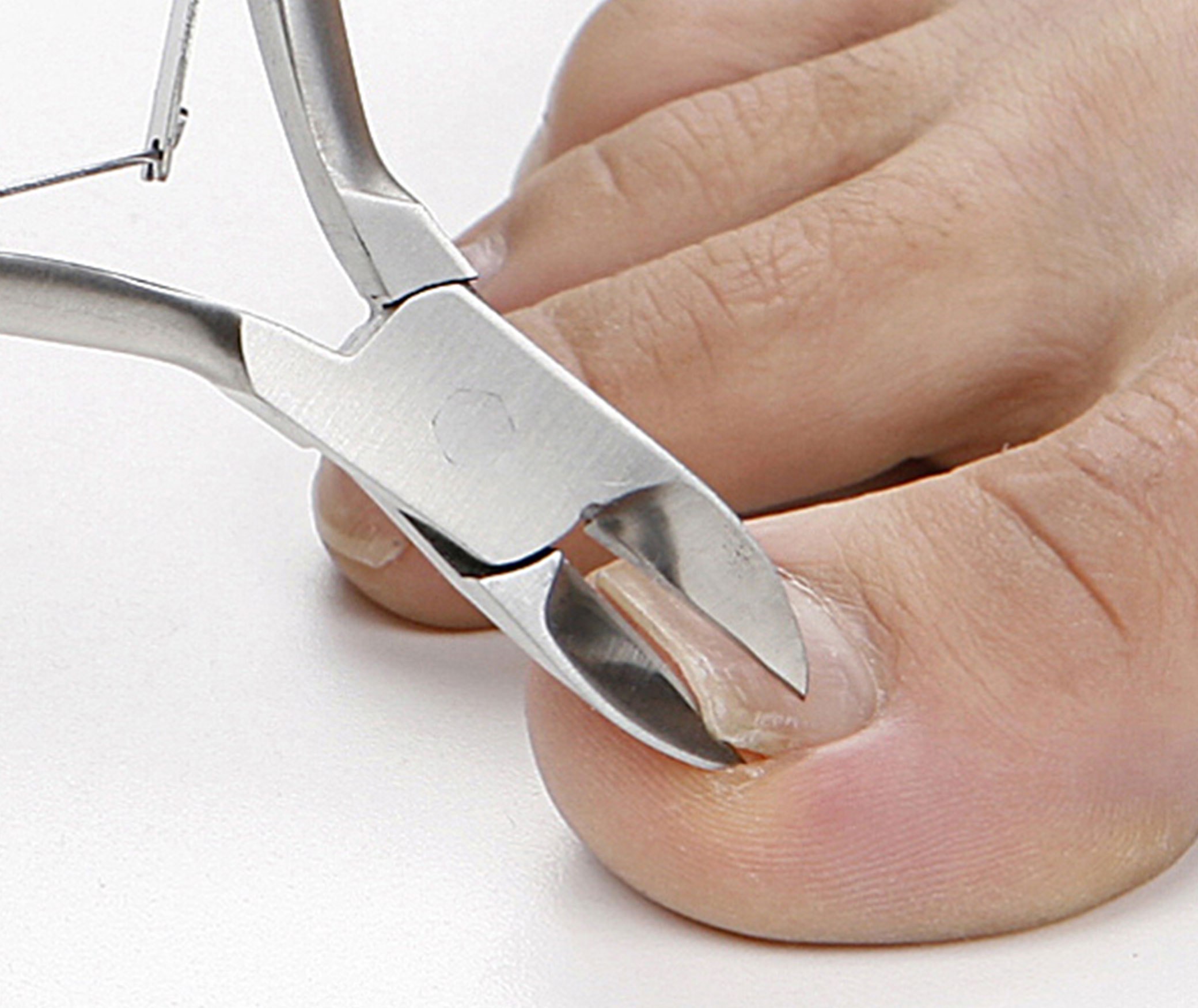
Elevation
Elevate the injured hand or foot above heart level whenever possible. This simple technique helps reduce blood flow to the area, which can decrease swelling and throbbing sensations.
Pain Medication
Over-the-counter pain relievers such as ibuprofen or acetaminophen can help manage pain and reduce inflammation. Always follow the recommended dosage instructions on the packaging.
Aftercare and Monitoring
Proper aftercare is essential for optimal healing and to prevent complications. Here’s what you need to know:
Changing Bandages
How often should you change the bandage on a nail injury? Change the bandage daily or more frequently if it becomes wet or soiled. Before applying a new bandage, gently clean the wound and reapply antibiotic ointment if needed.
Monitoring for Infection
Watch for signs of infection, which may include:
- Increased redness or warmth around the wound
- Swelling that worsens after 48 hours
- Pus or unusual discharge
- Fever
- Red streaks extending from the wound
If you notice any of these signs, contact a healthcare provider promptly.
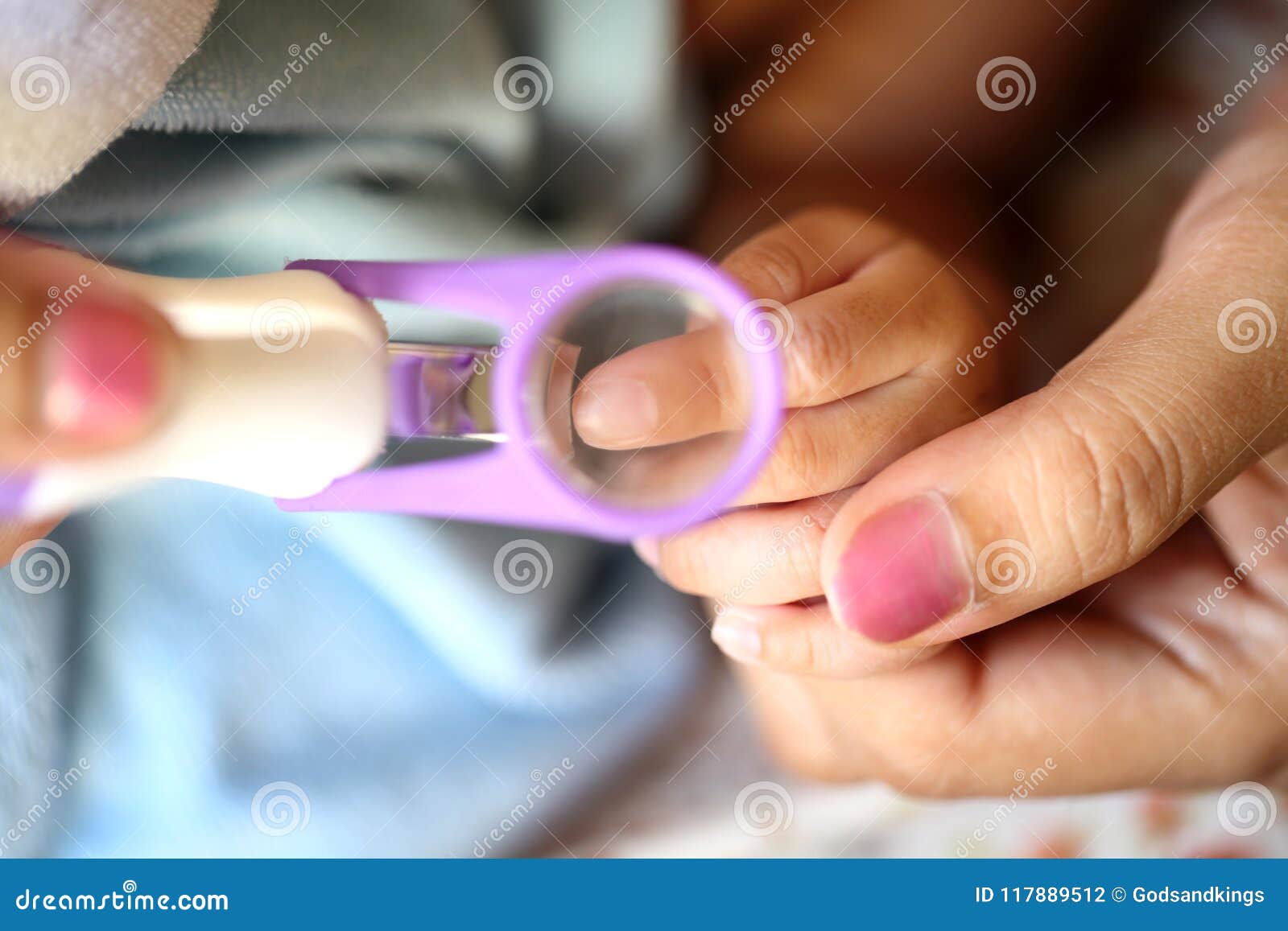
Nail Regrowth
Be patient with nail regrowth. A nail that has separated from the nailbed can take several months to grow back completely. During this time, keep the area clean and protected to prevent further damage.
Advanced Treatment Options
In some cases, nail injuries may require more advanced treatment from a healthcare professional. These interventions might include:
Nail Removal
For severely damaged nails or to access underlying injuries, a doctor may need to remove part or all of the nail. This procedure is typically done under local anesthesia.
Drainage of Subungual Hematomas
If there’s significant blood accumulation under the nail (subungual hematoma), a doctor may create a small hole in the nail to relieve pressure and drain the blood. This procedure, known as trephination, can provide immediate pain relief.
Stitches or Tissue Repair
Deep cuts or lacerations may require stitches to properly close the wound. In cases of more extensive tissue damage, surgical repair might be necessary.

Tetanus Prevention
Depending on your vaccination history and the nature of the injury, a tetanus shot or booster may be recommended. Your healthcare provider will assess this need based on your individual case.
Prevention and Long-term Nail Care
While accidents happen, there are steps you can take to minimize the risk of nail injuries and promote overall nail health:
Safety Precautions
How can you prevent nail injuries? Use proper protective equipment when working with tools or engaging in activities that pose a risk to your hands and feet. This includes wearing sturdy gloves and appropriate footwear.
Proper Nail Trimming
Keep your nails trimmed to a comfortable length. Use sharp, clean nail clippers and cut straight across, slightly rounding the edges to prevent ingrown nails.
Moisturizing
Keep your nails and surrounding skin moisturized to prevent brittleness and cracking. Apply hand cream regularly, paying special attention to your cuticles.
Nutritional Support
A balanced diet rich in biotin, vitamin E, and protein can help strengthen nails and promote healthy growth. Consider incorporating foods like eggs, nuts, and leafy greens into your diet.

Creative Solutions for Nail Repair
Sometimes, innovative approaches can help protect and repair damaged nails during the healing process. Here are some creative solutions:
Temporary Nail Patch
How can you protect a damaged nail while it heals? One method is to create a temporary patch using cheesecloth or a tea bag. Here’s how:
- Cut a small piece of cheesecloth or empty tea bag to fit over the damaged area.
- Apply a thin layer of nail glue to the damaged nail.
- Carefully place the patch over the glue and press gently.
- Once dry, trim any excess material.
- Apply a clear nail polish over the patch for added protection.
This method can help prevent further damage and protect the nail as it grows out.
Professional Nail Repair
For more severe damage, consider seeking help from a professional nail technician. They may use techniques such as:
- Acrylic overlay: Applying a mixture of liquid acrylic and powder to strengthen the nail
- Silk wrap: Using a thin silk fabric adhered to the nail for added strength
- Gel reinforcement: Applying a layer of gel polish to protect and strengthen the nail
These professional techniques can provide a more durable and aesthetically pleasing solution while your nail heals.

Long-term Effects and Considerations
While most nail injuries heal without long-term consequences, it’s important to be aware of potential lasting effects:
Nail Deformities
Severe injuries may result in permanent changes to nail shape or texture. In some cases, the nail may grow back thicker, more brittle, or with ridges.
Sensitivity
The nail bed and surrounding tissue may remain sensitive for some time after the injury has healed. This sensitivity usually diminishes over time but may persist in cases of severe trauma.
Increased Susceptibility
A previously injured nail may be more prone to future injuries or infections. Extra care and protection of the affected nail is advisable, even after it appears fully healed.
Psychological Impact
For some individuals, nail injuries – especially those resulting in visible deformities – can have a psychological impact. If you find yourself feeling self-conscious about your nails after an injury, don’t hesitate to speak with a healthcare professional or counselor.

Understanding these potential long-term effects can help you set realistic expectations and take appropriate measures to care for your nails in the future. Remember, with proper care and patience, most nail injuries heal well, allowing you to regain full function and appearance of your nails.
First Aid Information for Nail Injuries
Call 911 if:
- The fingertip or toe has been partially or completely amputated
- Major bleeding doesn’t stop after 10 minutes of pressure
1. When to See a Health Care Provider
Go to an emergency room or call a health care provider quickly if:
- The finger or toe is deformed, which may indicate fracture or dislocation. if you are unable to straighten and bend your finger normally, it may indicate a fracture or a tendon injury.
- The wound looks deep or long enough to need stitches.
- Discoloration or a bruise under the nail covers more than a quarter of the nail or there is continuing, intense pain.
- The nail is completely torn off or partially cut off from a crush injury or cut.
2. Stop Bleeding
- Apply direct pressure with a clean cloth.
3. Clean and Protect the Wound
- If the nail is torn, use sterile scissors to cut off rough edges to prevent further injury.

- Clean the wound and torn nail area with soap and warm water.
- Apply antibiotic ointment and bandage.
4. Treat Symptoms
- For swelling, ice the area and elevate the injured area above the heart.
5. Follow Up
- Continue to use ice and over-the-counter pain medication as needed. Pain and swelling should clear up within a week. It can take several months for a nail that has separated from the nailbed to grow back.
- Change the bandage daily. If signs of infection develop — such as pus, redness, or heat around the nail or a red streak extending from the wound — call a health care provider promptly.
- The person may need a tetanus shot or booster, depending on the date of last booster shot.
- If the person sees a health care provider, the health care provider will determine if there is a fracture or if tissue under the nail needs repair and may remove the nail to make the repair.
 The health care provider may make a hole in the nail to drain blood and give a tetanus shot if needed.
The health care provider may make a hole in the nail to drain blood and give a tetanus shot if needed.
How to Survive a Badly Injured Fingernail | the most –
It might be a little dramatic to suggest how to survive a ripped fingernail, but anyone who has ever suffered the throbbing discomfort of a nail cut or torn past the quick may not think so. This fairly minor injury can cause a lot of pain!
Accidents happen.
In January, I was reminded that improper use of a sharp knife can be dangerous. I’ve learned all sorts of things from the online Master Class classes I have been taking, including the importance of heeding the teacher’s warnings. Despite being cautioned against using a well-sharpened chef knife on a hard vegetable until completely proficient with the knife skill technique being taught, I did it anyway.
Note: This blog post contains affiliate links. If you click on one and then make a purchase, I may receive a form of compensation.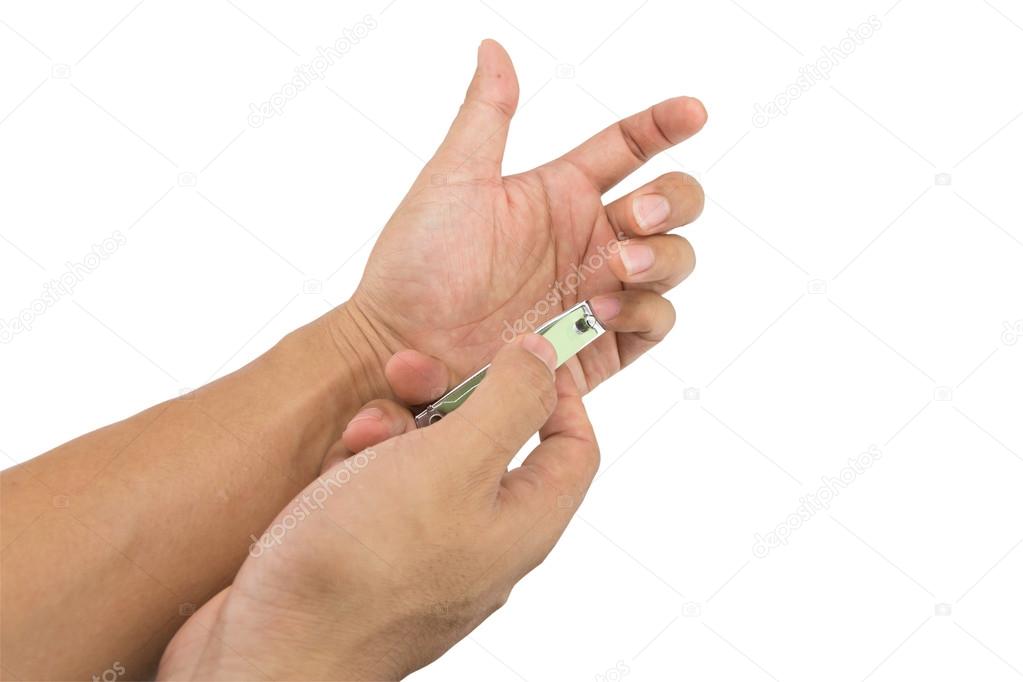 I only recommend products I believe in.
I only recommend products I believe in.
Oops. I did not cut off a finger (as it had been suggested could happen) when the big knife slipped. I did, however, slice right through the middle of the nail on my pinkie finger. Ouch.
Fortunately, the damage to the flesh under the nail was not deep. But it hurt – a lot. I was terrified I would completely rip off the top half of my nail before it grew out. My solution for a
few days was to keep it heavily bandaged.
Initially, I couldn’t even look at my nail without wincing, so there are no photos of the initial injury. I doubt you would want to see those, anyway! Here is one taken about five days after the accident. The inner edge of the nail above the cut was loose and could easily have caught on something.
| Yes, my hands are dry and chapped. Our cold winters and lack of humidity in Montana is hard on them! |
There had to be a better solution than using band aids
After almost a week, it finally dawned on me that a professional nail technician might be able to help. I spoke with one, and she suggested super gluing a patch of cheesecloth to the nail and then coating it with polish after that. (A piece of a tea bag would also work and probably would be easier to use than cheesecloth.)
I spoke with one, and she suggested super gluing a patch of cheesecloth to the nail and then coating it with polish after that. (A piece of a tea bag would also work and probably would be easier to use than cheesecloth.)
This repair seemed like a good idea, but I doubted my ability to perform this task on myself. I envisioned dripping glue everywhere and possibly adhering my finger firmly to the counter. Making an appointment to have the repair done professionally seemed like a more sensible idea.
The manicurist I spoke with had no available appointments, but I managed to get in with someone else. She suggested a different approach, which worked even better than I could have hoped.
A successful treatment
She painted the nail with several coats of a mixture of liquid acrylic nail glue and powder, which gave it a lot of stability. To make the repair less noticeable, she painted all of my nails with a clear top coat, which I could reapply as needed.
It was so nice to not have to keep wearing band aids. I immediately felt confident that the nail was strong and my hands could take as much abuse during my daily tasks as ever. It was the perfect solution.
About five weeks later, the nail had finally grown out enough so that the cut section was at the tip, and there was no longer any risk of pain if it broke off. The acrylic coating had held up well. It did grow out along with the fingernail, so by then only the top part of my nail (the part that still contained the rip) was still covered by the patch.
Healing took a while, but it did happen
Once it felt safe to do so, I was easily able to remove what remained of the acrylic coating by using a non-acetone nail polish remover. I filed the nail down to the intact portion, so no rough edges were left to snag.
I’m grateful and perhaps even a little wiser
My gratitude to the manicurist was comparable to what I would have felt had a health professional sutured up a wound. If you ever find yourself with a badly injured nail, I highly recommend this solution.
If you ever find yourself with a badly injured nail, I highly recommend this solution.
Furthermore, I do not recommend trying to cut sweet potatoes with a big knife.
Have you ever had a badly injured fingernail, and what did you do?
When to seek emergency help and first aid
A cut finger is a common injury. People may sustain these injuries during falls or if they accidentally slip with a knife or other sharp object.
A cut finger injury can range from mild to severe. Most minor cuts heal after first aid at home. However, deep cuts may require emergency treatment, such as stitches or surgery.
This article outlines when to seek emergency help for a cut finger and how to treat minor cuts at home. We also outline some of the medical treatments for deeper cuts and provide tips on aftercare and recovery.
A person will need emergency treatment for deep cuts that require stitches, or for a fingertip that is partially or fully severed.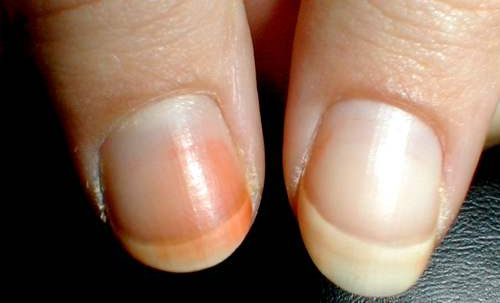
People should also seek immediate medical attention for the following:
- a wound more than three-quarters of an inch in length
- a wound more than a quarter of an inch deep
- an injury that exposes the bone
- bleeding that does not stop, even after compressing and elevating the injured finger
- a wound that affects the nerves, joints, or tendons
- a suspected broken bone
- if dirt or foreign objects are embedded into the wound
A person should also seek emergency medical attention if they sustain an open injury, and they are not up-to-date with their tetanus shots or boosters.
When a person cuts their finger, they should try to stop the bleeding and assess the severity of the injury.
First aid for a cut finger injury involves:
- cleaning the affected area quickly with soap and water
- applying petroleum jelly to moisten the wound and help promote healing
- covering the finger with a bandage or dressing to slow bleeding and prevent infection
- elevating the hand to reduce inflammation and swelling
- taking over-the-counter (OTC) pain relievers to help reduce swelling and alleviate pain
According to the American Academy of Dermatology Association, the majority of minor cuts heal within a week.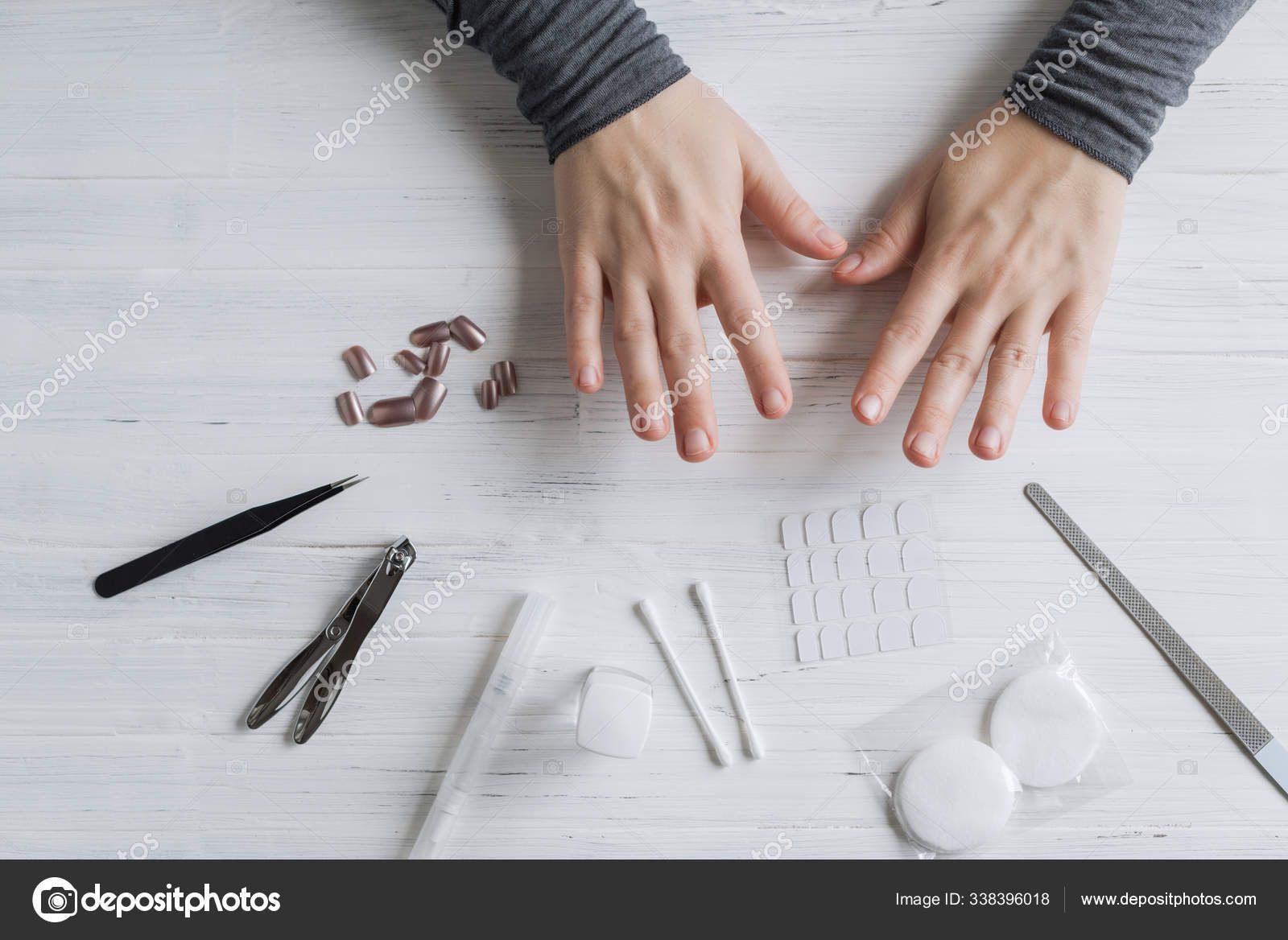
If a person completely severs their fingertip or finger, they should follow these steps:
- cleaning the severed portion of the finger with water
- covering the severed part in moistened gauze
- placing this inside a sealable plastic bag, then putting the bag inside a watertight container filled with ice
- taking this to the emergency room along with the injured person
If a cut finger is large and deep, a doctor will need to look at the injury. Before examining the finger, they may offer a numbing injection to help alleviate any pain.
They will then clean the wound, removing dead tissue and contaminants, a process known as debridement.
In some cases, a doctor may recommend leaving the wound open to heal on its own. Otherwise, they may recommend stitches or surgery.
Surgery may be necessary for deep and wide cuts, or for injuries that expose the bone.
There are two main surgical procedures for deep cuts on the finger:
- Skin graft: A surgeon uses healthy skin from elsewhere on the body to cover the injured area.
 They will then use stitches to secure the skin graft.
They will then use stitches to secure the skin graft. - Reconstructive surgery (RS): This surgery may be necessary for severe injuries that affect both the skin and its underlying soft tissues. During RS, a surgeon removes a flap of skin, fat, and blood vessels from elsewhere on the hand and uses it to cover the open wound.
If the finger is severed, a surgeon may perform a replantation procedure to reattach it. This is a complicated procedure with a lengthy recovery period.
A person may also receive a tetanus booster shot if they are not up-to-date with their tetanus vaccinations.
Most minor finger cuts heal within 2–4 weeks. Deeper cuts or those requiring medical attention or surgery will take longer to heal.
During the recovery process, people should be aware of signs that the wound is not healing correctly. They should see their doctor if they experience:
- symptoms of an infection, such as:
- redness
- swelling
- pain or tenderness
- pus
- a bad odor
- slow healing
- numbness
- nerve pain
People should change their wound bandages daily until the cut heals.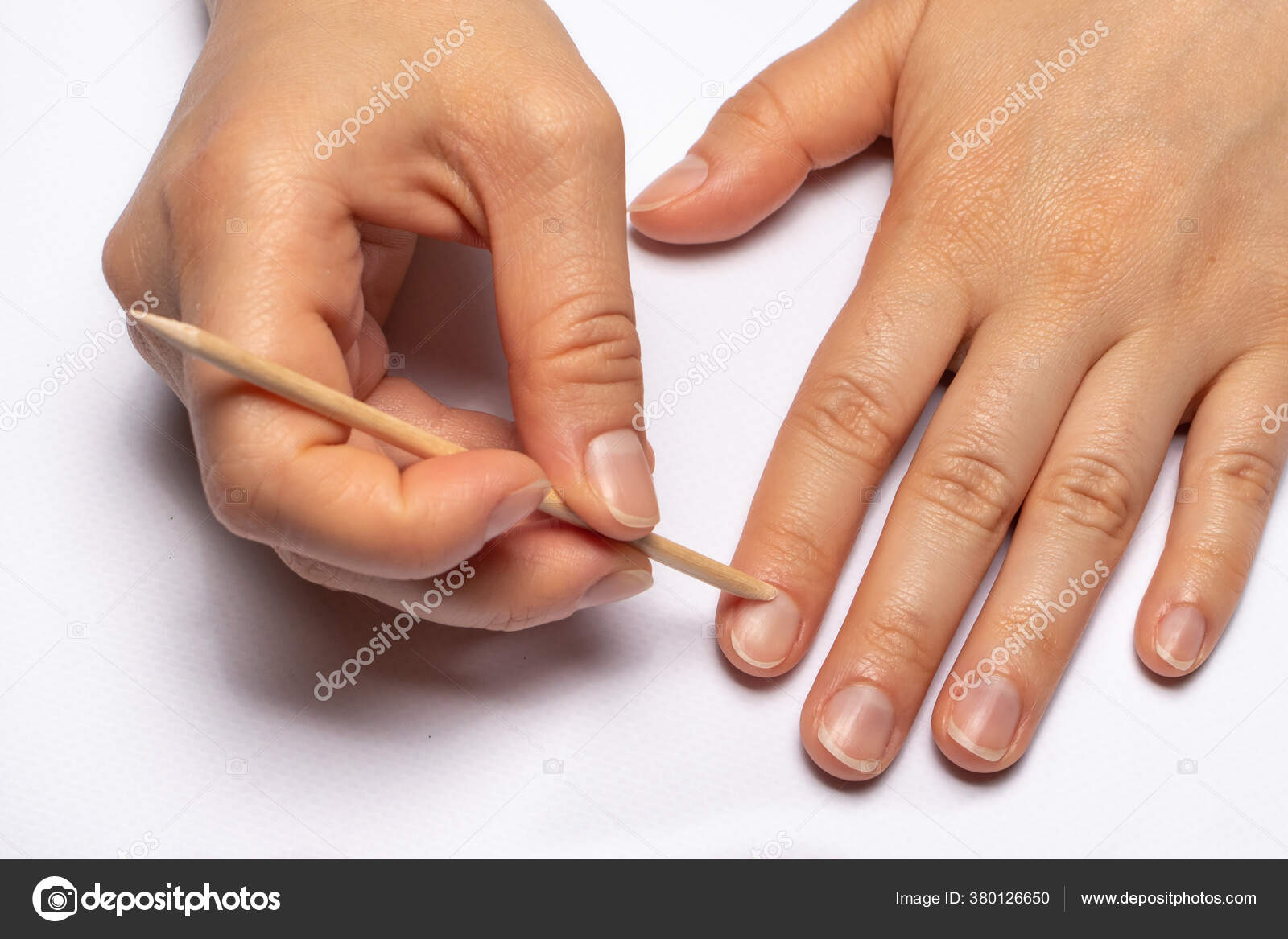 However, they should take care, as exposing the cut to the open environment may cause an infection.
However, they should take care, as exposing the cut to the open environment may cause an infection.
Full recovery from a finger replantation can take months or even years. During the recovery period, people can aid the healing process by:
- practicing physical therapy to prevent stiffness of the joints and minimize the formation of scar tissue
- avoiding holding the hand below the heart level for extended periods of time, as this can affect circulation to the replanted finger
- quitting smoking to improve circulation to the replanted finger
- wearing a brace to support the finger during certain activities or hobbies
Physical therapy is also important for people who experience a complete finger amputation. In these cases, doctors may suggest they wear a finger prosthesis to help them carry out day-to-day tasks.
It is essential to see a doctor if a finger cut or wound becomes infected.
Signs of a possible infection include:
- noticeable redness
- swelling
- a feeling of increased warmth in the affected finger
- presence of pus
- foul odor from the wound
- slow healing
- worsening pain
People who have diabetes should be aware they may experience slower healing and additional complications as their wound heals.
A finger cut is a common injury that can range from mild to severe. In either case, a person will need to perform first aid to help stem the bleeding and reduce the risk of infection.
Treatments for a cut finger injury depend on the severity. Most mild cuts are treatable at home with first aid and routine aftercare. However, a severe cut may need emergency treatment, such as stitches or surgery.
After treatment, minor cuts may take less than a week to heal, while more severe cuts may take months. Anyone who experiences pain or signs of infection during this time should visit their doctor for further examination and treatment.
Finger Injury | Advocare Aroesty Ear, Nose & Throat Associates
Is this your symptom?
- Injury to the skin or nail of the finger
- Injury to a bone, muscle, joint, or ligament of the finger
Some Basics…
- There are many ways that people can injure their fingers.
- There are also many types of finger injuries.
 There are bones, tendons, ligaments, cartilage, and muscles in the fingers. These can all be injured.
There are bones, tendons, ligaments, cartilage, and muscles in the fingers. These can all be injured. - Treatment depends on the type of injury a person has. A doctor will know the right way to treat a finger injury.
Types of Injuries
- Abrasion: this is the medical term for scraped skin. This happens when an injury scrapes off the top layer of the skin. An example is when people “scrape” their knuckles. Pain is usually mild. This can usually be treated at home.
- Contusion: this is the medical term for bruise. It is caused by a direct blow to the skin and muscles. The skin is not broken, and there is no cut. The bruised skin may first look red, then purple, and finally orange-yellow. These skin color changes are from blood that leaked from tiny torn blood vessels in the bruised area. The skin may also be swollen. Pain is usually mild to moderate. Bruises are tender to touch. Most often this can be treated at home.
- Cut – Superficial: superficial cuts (scratches) only go part of the way through the skin and rarely become infected.
 A scratch is an injury to the skin made by a sharp edge. For example, scratches can be caused by fingernails, a sharp nail, a piece of metal, or a branch of a tree or bush. A paper cut is a scratch from the edge of a piece of paper. This can usually be treated at home.
A scratch is an injury to the skin made by a sharp edge. For example, scratches can be caused by fingernails, a sharp nail, a piece of metal, or a branch of a tree or bush. A paper cut is a scratch from the edge of a piece of paper. This can usually be treated at home. - Cut – Deep: deep cuts (lacerations) go through the skin. A laceration is caused by cutting the skin with the sharp edge of an object. Lacerations longer than ½ inch (12 mm) usually need sutures (stitches).
- Dislocation: this is when a bone comes out of the joint. The joint always looks crooked or deformed. The pain can be moderate to severe. A person with this problem should go to the doctor right away. A doctor will treat this by pulling the finger bone back into the joint socket.
- Fracture: this is the medical term for a broken bone. It means the same thing as a break or crack in the bone. The pain is severe and there is often marked swelling. The type of treatment needed depends on the type of fracture.
 Usually a person with a finger broken finger just needs a splint. A person with a bad fracture may need surgery.
Usually a person with a finger broken finger just needs a splint. A person with a bad fracture may need surgery. - Sprain (Jammed Finger): a sprain is the medical term used when ligaments are torn or over-stretched. Ligaments are the bands of tissue that connect bones to each other. For example, this can happen when a person catches a basketball and the ball jams the fingertip. Pain and swelling can range from mild to severe. Minor sprains heal themselves with time and rest. Usually a person with a finger sprain just needs a splint.
- Smashed or Crushed Fingertip: this injury most often results from smashing a finger in a door. It can also happen from a heavy object like a hammer hitting the finger. Most often, the fingertip gets a few cuts, a blood blister, or a bruise. Sometimes the nail is damaged. Rarely, the fingertip bone can get broken.
- Bruised Fingernail (blood under the fingernail): it is caused by a crush injury to the fingertip.
 It can happen when a heavy object like a hammer hits the finger. The more blood under the nail, the more it hurts. If the pain is severe, the pressure may need to be released to help the pain go away. This is best done by a doctor or other trained provider. It involves making a small hole in the nail to release the blood. A rule of thumb is that this may be needed if blood is under more than half of the nail. The fingernail sometimes falls off after this type of injury. If it does, a new nail will grow back in 6 to 12 weeks.
It can happen when a heavy object like a hammer hits the finger. The more blood under the nail, the more it hurts. If the pain is severe, the pressure may need to be released to help the pain go away. This is best done by a doctor or other trained provider. It involves making a small hole in the nail to release the blood. A rule of thumb is that this may be needed if blood is under more than half of the nail. The fingernail sometimes falls off after this type of injury. If it does, a new nail will grow back in 6 to 12 weeks.
Pain Scale
- None: no pain. Pain score is 0 on a scale of 0 to 10.
- Mild: the pain does not keep you from work, school, or other normal activities. Pain score is 1-3 on a scale of 0 to 10.
- Moderate: the pain keeps you from working or going to school. It wakes you up from sleep. Pain score is 4-7 on a scale of 0 to 10.
- Severe: the pain is very bad.
 It may be worse than any pain you have had before. It keeps you from doing any normal activities. Pain score is 8-10 on a scale of 0 to 10.
It may be worse than any pain you have had before. It keeps you from doing any normal activities. Pain score is 8-10 on a scale of 0 to 10.
When are Stitches Needed?
- Any cut that is split open or gaping most likely needs stitches. Cuts longer than ½ inch (12 mm) most often need stitches.
- A doctor should look at any open wound that may need stitches. This is the case regardless of the time passed since the injury.
When to Call for Finger Injury
Call 911 Now
Call Doctor or Seek Care Now
| Contact Doctor Within 24 Hours
Contact Doctor During Office Hours
| Self Care at Home |
Care Advice for Minor Injuries of Finger
- What You Should Know:
- There are many ways that people can injure their fingers.

- There are also many types of finger injuries. There are bones, tendons, ligaments, cartilage, and muscles in the fingers. These can all be injured.
- You can treat minor finger injuries at home.
- Here is some care advice that should help.
- There are many ways that people can injure their fingers.
- Treatment of Cuts, Scratches and Scrapes:
- Use direct pressure for 10 minutes to stop any bleeding.
- Wash the wound with soap and water for a few minutes.
- Gently scrub out any dirt with a washcloth.
- Put an antibiotic ointment on the wound. Cover it with an adhesive bandage (Band-Aid) or dressing and change daily.
Treatment of Bruised Finger: Soak the finger in cold water for 20 minutes.
Treatment of Bruised Fingernail (blood under the nail): Put an ice bag on the area for 20 minutes.
- Treatment of Jammed Finger:
- Caution: Be certain that you can bend and straighten each finger.

- Soak the finger in cold water for 20 minutes.
- Protect your finger by “buddy-taping” it to the next finger.
- Caution: Be certain that you can bend and straighten each finger.
- Treatment of Smashed or Pinched Fingertip:
- Put an ice bag on the area for 20 minutes.
- Wash the finger with soap and water for 5 minutes.
- Trim any small pieces of torn dead skin with scissors. Clean the scissors with rubbing alcohol before and after use.
- Put an antibiotic ointment on the wound. Cover it with an adhesive bandage (Band-Aid) and change daily.
- Treatment for a Torn Nail (from catching it on something):
- For a cracked nail without rough edges, leave it alone.
- If the nail has a tear in it, you will need to trim off the loose piece. Use a small sharp scissors to cut it off along the line of the tear. Clean the scissors with rubbing alcohol before and after use. Pieces of the nail could catch on objects and cause further tearing.
- Put an antibiotic ointment on the nail bed.
 Cover it with an adhesive bandage (Band-Aid) and change daily.
Cover it with an adhesive bandage (Band-Aid) and change daily. - After about 7 days, the nail bed should be covered by new skin. It should no longer hurt. It takes about 6-12 weeks for a fingernail to grow back.
- Pain Medicine:
- You can take one of the following drugs if you have pain: acetaminophen (Tylenol), ibuprofen (Advil, Motrin), or naproxen (Aleve).
- They are over-the-counter (OTC) pain drugs. You can buy them at the drugstore.
- Use the lowest amount of a drug that makes your pain feel better.
- Acetaminophen is safer than ibuprofen or naproxen in people over 65 years old.
- Read the instructions and warnings on the package insert for all medicines you take.
- Call Your Doctor If:
- Cut or scrape looks infected (redness, red streak, or pus)
- Pain becomes severe
- Pain is not better after 3 days
- Pain or swelling lasts more than 2 weeks
- You think you need to be seen
- You get worse
And remember, contact your doctor if you develop any of the ‘Call Your Doctor’ symptoms.
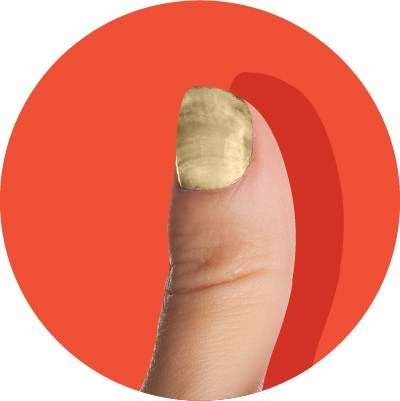
Disclaimer: this health information is for educational purposes only. You, the reader, assume full responsibility for how you choose to use it.
| Last Reviewed: | 5/30/2021 1:00:29 AM |
| Last Updated: | 3/11/2021 1:00:31 AM |
Copyright 2021 Amazon.com, Inc., or its affiliates. | |
Family Practice and Urgent Care
We’ve all done it — slammed our finger in the car door or dropped a heavy can on our big toe. The pain is excruciating and the visual is upsetting, as blood, swelling, and discoloration typically follow the incident.
We see this type of injury often here at Woodstock Family Practice & Urgent Care. Dr. James Lee expertly and compassionately cares for our patients with all types of nail bed injuries, relieving your pain and increasing your chances of a full recovery.
If you experience trauma to your nails, here are some steps to take at home, and some signs to indicate whether it’s an urgent care situation that requires you to come in and see Dr.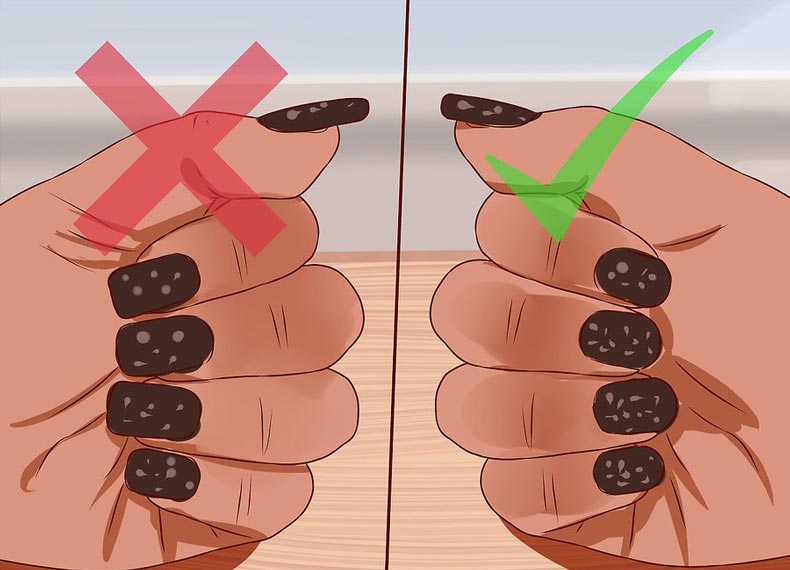 Lee right away.
Lee right away.
Types of nail bed injuries
Regardless of the type of accident — pinched between two objects, stubbed toe, dropped object, puncture wound, or cut — you could end up with any one of several kinds of nail injuries. Here are a few of the most common.
Subungual hematoma
When you slam a hammer on your thumb, this is typically the outcome. A subungual hematoma is simply the medical term for blood trapped under your nail. It throbs a lot and looks like a black, blue, or purple bruise.
If the hematoma isn’t too big (that is, it’s only covering about a quarter of the nail) then it’s not too serious. But if it’s about half of your nail, you may need to have it drained. Dr. Lee can give you a local anesthetic to numb your nail before he inserts a needle to release the fluid and relieve the pressure.
Nail bed avulsion
Some accidents can lift your nail away from your finger partially or completely. This is called nail bed avulsion, and it’s extremely painful.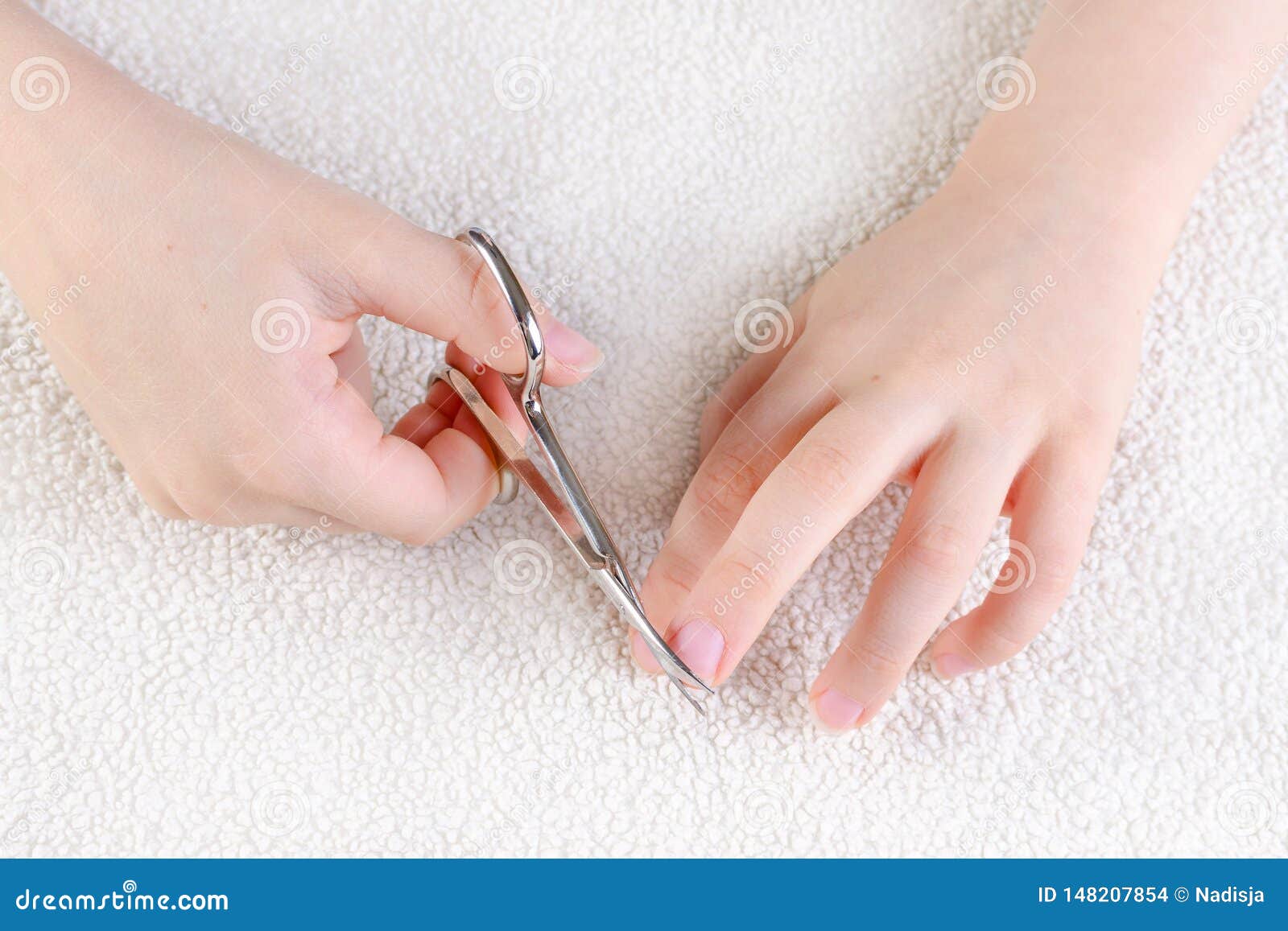 This injury is typically accompanied by bleeding and swelling, and it definitely calls for immediate medical attention.
This injury is typically accompanied by bleeding and swelling, and it definitely calls for immediate medical attention.
Dr. Lee makes sure the nail bed is expertly sterilized to avoid infection before he bandages it. If your nail is only partially pulled away, he may need to remove it completely for proper healing.
Nail bed laceration
Saws, scissors, and even dropped objects can cut your nail as well as your fingers or toes. Depending on the type and extent of your injury, Dr. Lee may need to stitch or glue the area closed, or he may need to remove the nail.
Nail injury complications
Most nail injuries heal completely, even if your nail was removed. But occasionally, the new nail grows back with a deformity. This could be because there’s not enough nail bed support, or because you have too much scar tissue built up in the nail bed. Either way, Dr. Lee can trim or adjust the nail bed to accommodate the new nail.
Most nail injuries can be treated at home.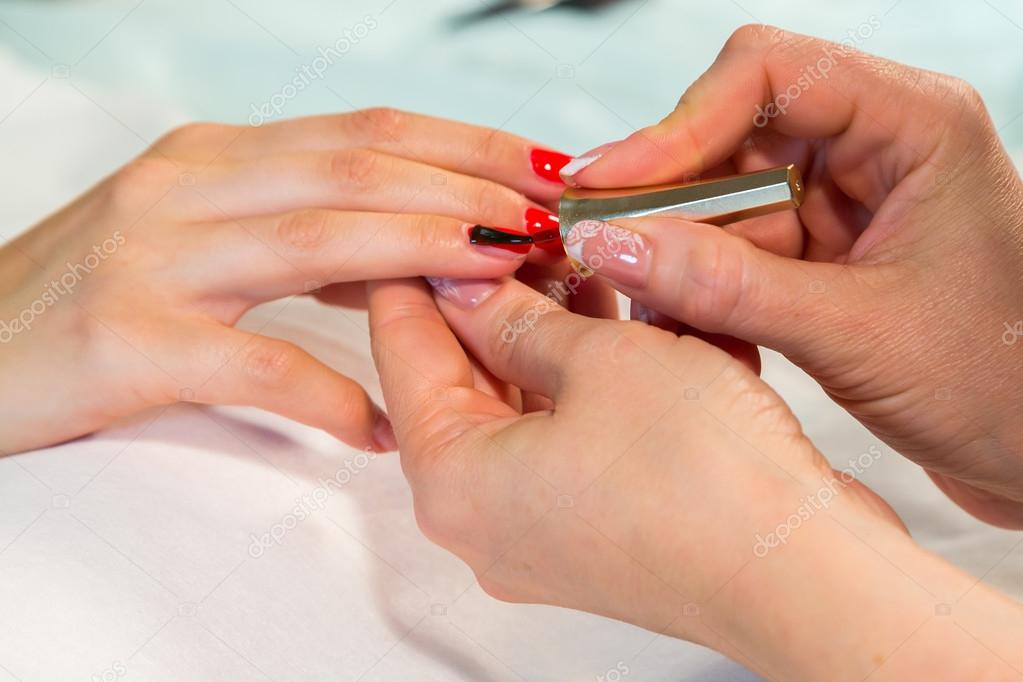 Make sure the area is clean, remove rings in anticipation of swelling, use a bandage if necessary, and use ice and elevation to reduce swelling. Over-the-counter pain medications are often all it takes to ease the discomfort.
Make sure the area is clean, remove rings in anticipation of swelling, use a bandage if necessary, and use ice and elevation to reduce swelling. Over-the-counter pain medications are often all it takes to ease the discomfort.
But if you have bleeding or pain that won’t stop, or a severe laceration or hematoma, call our office in Woodstock, Georgia, right away at 770-927-8273 or book an appointment online. We also have telehealth appointments available if you’d rather have a video consultation with Dr. Lee. You can also send a message to Dr. Lee and the team here on our website.
5 Ways to Stop Your Dogs Nail From Bleeding
Last updated on By Puppy Leaks 52 Comments
Do you need a way to stop your dog’s nail from bleeding? Cutting your dog’s nail too short is a common issue when trimming your dogs nails, but luckily there are a few easy solutions you can use to make the bleeding stop.
While it might take awhile to regain your dogs trust when it comes to trimming his nails again, the wound itself can be easily treated at home.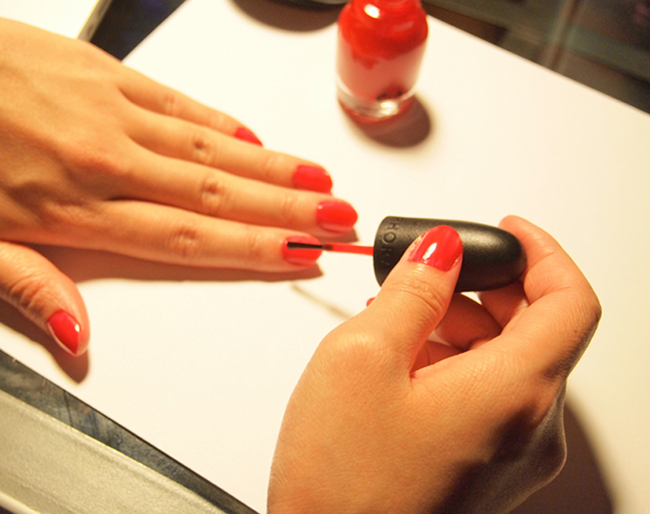 From using styptic powder to creating your own DIY solution, here’s 5 easy ways to stop your dogs nail from bleeding.
From using styptic powder to creating your own DIY solution, here’s 5 easy ways to stop your dogs nail from bleeding.
First Step: Stay Calm After You Cut Your Dogs Nail Too Short
The first thing you need to remember after you cut your dogs nail too short is to remain calm. You’ll know you’ve cut too far immediately, your dog will likely pull away from you and let out a yelp. If you panic you’ll make your dogs fear worse, so try to remain calm. The bleeding is going to look much worse than it actually is. The calmer you remain the calmer you can keep your dog.
If you do trim your dog’s nail too short and cut the quick, which contains live blood vessels, the nail will bleed and your dog will likely yelp and pull away. The bleeding can be profuse and long lasting. Stay calm, talk in a soothing voice and immediately feed your dog a bunch of tasty treats. – ASPCA
Most nail trimming accidents are minor and can be treated at home. If you have another person available enlist their help; another set of hands will make the process much easier.
Nail trimming accidents happen, and they’re very common among dogs with dark colored nails where the quick isn’t easily visible.
The Quickest Way to Stop Bleeding is by Using Styptic Powder
Styptic powder is the most common and efficient way to stop a dog’s nail from bleeding. It’s what veterinarians and groomers use to treat minor cuts and to stop bleeding. It contains Benzocaine which works as a topical anesthetic to help ease pain, and ferric subsulfate which helps to stop bleeding.
To use styptic powder you can either dip your dogs nail directly into the powder or use an applicator. When using an applicator such as a swab or q-tip be sure to apply moderate pressure to your dogs nail for a few minutes, or until the bleeding has stopped.
Styptic powders or styptic pencils are antihemorrhagic agents that work by contracting blood vessels. Styptic powder helps to clot the blood and can help prevent bacteria from entering the bloodstream.
If you don’t have any styptic powder on hand it’s not a bad idea to pick some up next time you’re at the pharmacy or pet store. Styptic pencils are commonly available near the shaving section in pharmacies since they’re also used to treat shaving injuries and minor cuts.
Your veterinarian will use a product like styptic sticks or Kwik Stop to stop the bleeding quickly. You can find these at most pet supply stores, and it might be a good idea to stock some in your pet’s first aid kit if this happens often in your house. – Princeton Veterinary Hospital
How to Stop a Dogs Nail From Bleeding With Styptic Powder
If you want to stop your dogs nail from bleeding styptic powder is your best bet. It’s the quickest and most efficient method. Styptic powder works as both a topical anesthetic and antihemorrhagic agent. It helps ease pain and stop bleeding. It’s what professional groomers & veterinarians use, and it stops minor bleeding in 30 seconds or less.
How to stop your dogs nail from bleeding with styptic powder:
- Apply the styptic powder directly to your dogs bleeding nail with a moistened cotton applicator
- Keep moderate pressure on the cut for at least 30 seconds
- If the bleeding continues reapply the powder
If your dog is calm you can dip your dogs nail directly into the powder. That will cause the bleeding to stop almost immediately. If your dog won’t let you handle his nails after a trimming accident you can use the application method mentioned above. Just be sure to keep moderate pressure applied to the nail for at least 30 seconds when using an applicator.
How to Use a Styptic Pencil to Stop a Bleeding Nail
Styptic pencils are available at most pharmacies, and they’re usually located in the shaving aisle. They’re nice to have on hand for treating minor cuts and stopping your dog’s nail from bleeding.
How to stop your dogs bleeding nail with a styptic pencil:
- Dip the tip of the styptic pencil in clean water or put a drop of water on the tip to get it moistened
- Take the styptic pencil and rotate it across your the cut on your dogs nail
- The silver nitrate in these pencils causes coagulation very quickly which will seal the injured blood vessels
A word of caution when using styptic pencils: many contain silver nitrate which will sting on contact. Expect your dog to show discomfort when it’s first applied to their nail. And remember that silver nitrate is messy stuff. It will stain your skin, carpet, and counter tops so use with caution.
4 Homemade Remedies to Stop Your Dogs Nail From Bleeding
If you don’t have any styptic powder at home don’t worry, there’s a few common household items you can use as a substitute. Any of the following can be used to stop your dogs nail from bleeding:
- Cornstarch
- Flour
- Baking Soda
- Bar of Soap
With any of these methods the most important thing to keep in mind is that you need to keep solid pressure on your dogs nail while applying the solution. These methods work, but they don’t stop bleeding instantly like styptic powder. For them to be effective you’ll need to apply moderate pressure for a few minutes.
Most coagulant failures are caused by being too shy about pressing the stuff into the blood. You can’t just sprinkle the stuff on like fairy dust; you need to hold and press it on so it absorbs the blood at the end of the quick and helps it clot. – St. James Animal Hospital
How to Use Flour, Baking Soda, or Cornstarch to Stop the Bleeding
One home remedy to stop your dogs nail from bleeding is to use flour, baking soda, or cornstarch. You’ll need to thoroughly cover your dog’s nail with it, and then gently compress their nail with a towel or cloth until the bleeding stops.
How to Stop Your Dogs Nail from Bleeding with Flour, Baking Soda or Cornstarch:
- Pour some flour, baking soda or cornstarch into your palm
- Gently dip your dog’s nail into the flour, baking soda or cornstarch
- If the bleeding doesn’t stop dip their nail once again (don’t wipe off your dog’s nail before dipping again)
- Gently compress your dog’s nail with a cloth or towel for a few minutes until the bleeding stops
If your dog isn’t a fan of having their nail dipped you can use a cotton applicator to apply the flour, baking soda or cornstarch onto their nail. If the bleeding doesn’t stop right away put some more on their nail. Don’t wipe off your dog’s nail between applications; the flour, cornstarch or baking soda that is on there will help aid in coagulation. Gently compress your dog’s nail with a paper towel or cloth until the bleeding stops.
How to Use Soap to Stop a Dogs Nail From Bleeding
To get your dogs nail to stop bleeding with a bar of soap you’ll want to first soften it up by getting it wet. After the soap is a little mushy you’re going to place the soap directly onto your dog’s bleeding nail apply firm pressure for a a couple minutes.
How to Stop a Dogs Nail From Bleeding With a Bar of Soap:
- When using a bar of soap dampen it until it gets mushy
- Push your dogs affected nail directly into the bar of soap
- Keep the nail in the soap as you apply firm pressure for 3-5 minutes
If you don’t want to push your dogs paw directly into the soap you can break off a piece and wrap it in a towel before applying. Be sure to keep firm pressure for at least 3 minutes to make the bleeding stop. When you suspect that the bleeding has stopped take a quick peak first to ensure that it’s worked.
If the bleeding is minor, try rubbing a bar of clean, scent-free soap over it. If the bleeding is steady, wrapping ice within the compressed cloth or paper towel will help lessen the blood flow. – Wahl
Clipping your dogs nails should be part of their normal grooming routine. If you’re not comfortable using guillotine style clippers try using a dremel tool to sand your dogs nails down.
Keep Your Dog Rested After Applying Treatment
After the initial bleeding has stopped it’s important to keep your dog off his feet for at least 30 minutes. Keeping him off his feet will keep him from re-injuring the nail, and if you have bandages on hand it’s a good idea to wrap your dogs paw to help prevent further injury. And if you’re looking for a relatively easy way to keep your dog still for awhile give him a stuffed Kong to keep him occupied.
If Your Dogs Nail Doesn’t Stop Bleeding After 20 Minutes
Most nail injuries are minor and will stop bleeding within 20 minutes with these home remedies. The blood loss, although it looks terrible, is usually minimal and there’s little risk of your dog losing too much blood.
The above solutions work for minor nail cuts. If your dogs nail continues to bleed for more than 20 minutes it’s time to call your veterinarian.
How to Identify the Quick in Your Dogs Nails Before Trimming
Nail bleeding occurs when you cut your dog’s quick, so if you want to avoid accidents when trimming your dog’s nails it’s important to know how to identify it.
The quick in your dogs nail is the cuticle-like part in the center that’s rich in nerves and blood vessels. Since it’s filled with blood vessels it bleeds a lot if you cut into it, and your dog will likely let out a yelp.
The quick can be hard to identify in dogs with dark nails. You can avoid accidents by trimming small pieces off at a time and stopping as soon as you start to see a whitish-grey circle (the quick).
Identifying the quick in dogs that have white nails is usually easy because the pink is easy to see, but with the black nails identifying the quick can be a challenge. If you take a look at a white nail on a dog or cat you’ll see a dark smaller part on the inside – that’s the quick. That’s the part you want to avoid trimming. But if you have a dog with black nails you’re probably not going to see any of the quick until you actually start clipping.
To help avoid cutting your dogs quick start with small cuts and examine your dogs nails. Once you start to see a whitish or grey circle in the middle that means you’re getting close to the quick.
If you’re not comfortable with trimming your dogs nails you can try using a dremel rather than a guillotine style clipper. The dremel has different speeds and lets you trim nails without worrying about clipping off too much.
As you cut the nail deeper, you will see a homogeneous gray to pink oval (3) starting to appear at the top of the cut surface of the nail. Stop cutting the nail at this point as additional cutting will cut into the quick. – Clipping a Dog’s Claws College of Veterinarian Medicine, Washington State University
Keeping your dogs nails trimmed is an important part of grooming. Long or overgrown nails can lead to discomfort and posture problems for your dog.
Your Dog Might be Nervous After You’ve Cut Their Quick
It might take awhile for your dog to get comfortable having his nails trimmed again if you’ve cut into their quick, but they will forgive you. Be sure to give him lots of treats and praise every time you get out the nail clippers; that will help make the experience more positive.
My dog was very nervous with nail trimmings when we first got her, so I made desensitizing her to the process a priority. Three times a week I’d get out a bunch of treats (carrots or apple slices) and slowly get her used to having her nails trimmed while handing out treats. Eventually she started to associate the nail clippers & dremel with yummy treats.
Here’s a video that demonstrates how useful clicker training & positive reinforcement are for getting your dog used to having their nails trimmed.
Nail Trimming Is An Important Part of Your Dogs Grooming Routine
Although trimming your dogs nails is never fun it is part of a healthy grooming routine. There’s no set rule for how often to trim your dogs nails. Trim them as often as it takes to prevent their nails from touching the floor when they’re standing. Long nails can be painful for your dog, and they can make it harder for your get a grip when walking.
Some dogs are more challenging than others when it comes to getting their nails clipped. If you’re uncomfortable trimming your dogs nails or it becomes too much of a challenge you can have it done at your veterinarian’s office or the groomer.
If you want to do your dogs nails on your own but hate using clippers try a dremel tool. They grind nails down rather than clipping, making it much easier to avoid any accidents.
I am not a veterinarian. This advice is for the treatment of the minor bleeding accompanying cutting your dogs nail too short. If you have any concerns or if your dogs nail bleeds for more than 20 minutes please consult your veterinarian.
Please share with your friends
Paronychia (for Teens) – Nemours
What Is Paronychia?
Paronychia (pronounced: pair-uh-NIK-ee-uh) is an infection of the skin around a
fingernail or toenail. The infected area can get swollen, red, and painful. Sometimes
a pus-filled blister may form.
Most of the time, paronychia is no big deal and can be treated at home. In rare
cases, the infection can spread to the rest of the finger or toe. When that happens,
it can lead to bigger problems that may need a doctor’s help.
You’re not likely to get paronychia in a toe (unless you have an ingrown
toenail). But fingernail paronychia is one of the most common hand infections
there is
What Causes Paronychia?
Paronychia usually happens when the skin around a person’s nail is irritated or
injured. When the skin around the nail is damaged, germs can get in and cause an infection.
These germs can be bacteria (causing bacterial paronychia) or fungi
(causing fungal paronychia).
Common paronychia causes include:
- biting or pulling off a hangnail
- frequent sucking on a finger
- clipping a nail too short or trimming the cuticle (the skin around the sides and
bottom of the nail) - getting manicures
- having hands in water a lot (as from a job washing dishes in a restaurant)
Some people get paronychia infections after a manicure or using from chemicals
in the glue used with artificial nails. Certain health conditions (like diabetes)
also can make paronychia more likely. And if your hands are in water a lot (if you
wash dishes at a restaurant, for example), that ups the chances of getting paronychia.
What Are the Signs of Paronychia?
Chances are, if you have paronychia, it will be easy to recognize. There will be
an area of skin around a nail that is painful and tender when you touch it. The area
probably will be red and swollen and feel warm. You may see a pus-filled blister.
If the paronychia has been there a long time, the nail may turn a different color.
It might not be its usual shape or might look as if it’s coming away from the nail
bed.
What Should You Do?
If paronychia is mild and hasn’t started to spread beyond the fingernail, you can
probably treat it at home. Soak the infected nail in warm water for 20 minutes a few
times a day. The infection will probably heal on its own in a few days.
If paronychia doesn’t get better after a week or so, call your doctor. You’ll
want to call a doctor right away if you have an abscess (a pus-filled area
in the skin or under the nail) or if it looks like the infection has spread
beyond the area of the nail.
If paronychia becomes severe and you don’t see a doctor, infection can spread through
the finger or toe and move into the rest of the body. Luckily, this is very rare.
What Do Doctors Do?
Usually, a doctor or nurse practitioner will be able to diagnose paronychia just
by examining the infected area. In some cases, a doctor may take a pus sample to be
examined in a laboratory to determine what type of germ is causing the infection.
If you have diabetes, let your doctor know if you notice any signs of paronychia,
even if it seems mild.
Don’t try to puncture or cut into an abscess yourself. Doing that can lead to a
more serious infection or other complications. The doctor may need to drain the abscess
and possibly prescribe antibiotic medications to treat the infection. Once an abscess
is treated, the finger or toe almost always heals very quickly.
If someone has fungal paronychia, a doctor may prescribe antifungal creams, lotions,
or other medicines.
Can Paronychia Be Prevented?
Here are some things that can lessen your chances of developing paronychia:
- Don’t bite your nails or pick at the cuticle area around them.
- Don’t cut nails too short. Trim your fingernails and toenails with clippers or
manicure scissors, and smooth the sharp corners with an emery board or nail file.
The best time to do this is after a bath or shower, when your nails are softer. - Don’t push your cuticles back, trim them, or use cuticle remover. Damaging your
cuticles gives bacteria a way to get into your skin and cause an infection. - If you’ll be washing a lot of dishes or if your hands might be coming into contact
with chemicals, wear rubber gloves. - If you have diabetes, make sure it is under control.
- Practice good hygiene: keep your hands and feet clean and dry.
- If you get manicures or pedicures at a nail salon, consider bringing along your
own clippers, nail files, and other tools.
As much as possible, try to avoid injuring your nails and the skin around them.
Nails grow slowly. Any damage to them can last a long time.
Date reviewed: January 2015
My daughter cut her finger and cut her nail – Question to the pediatric surgeon
If you did not find the necessary information among the answers to this question, or if your problem is slightly different from the one presented, try asking an additional question to the doctor on the same page, if it is on the topic of the main question … You can also ask a new question, and after a while our doctors will answer it. It’s free. You can also search for the information you need in similar questions on this page or through the site search page.We will be very grateful if you recommend us to your friends on social networks.
Medportal 03online.com carries out medical consultations in the mode of correspondence with doctors on the website. Here you get answers from real practitioners in their field. At the moment, on the site you can get advice in 69 areas: a COVID-19 specialist, an allergist, an anesthesiologist-resuscitator, a venereologist, a gastroenterologist, a hematologist, a geneticist, a hepatologist, a gynecologist, a homeopath, a dermatologist, a pediatric gastroenterologist, a pediatric gynecmatologist , pediatric cardiologist, pediatric ENT, pediatric neurologist, pediatric nephrologist, pediatric ophthalmologist, child psychologist, pediatric pulmonologist, pediatric rheumatologist, pediatric urologist, pediatric surgeon, pediatric endocrinologist, defectologist, nutritionist, immunologist, infectious diseases specialist, cardiologist, , Laura, mammologist, medical lawyer, narcologist, neuropathologist, neurosurgeon, neonatologist, nephrologist, nutritionist, oncologist, oncourologist, orthopedic traumatologist, ophthalmologist, parasitologist, pediatrician, plastic surgeon, puliathologist, proctologist, roentgenologist , sexologist-andrologist a, dentist, trichologist, urologist, pharmacist, physiotherapist, herbalist, phlebologist, phthisiatrician, surgeon, endocrinologist.
We answer 97.23% of questions .
Stay with us and be healthy!
Ingrown toenail. The reasons. Treatment.
Ingrown toenail. The reasons. Treatment.
15 January 2020
Ingrown toenail is a very common disease that can occur in almost everyone. From studies by various authors, it is known that both male and female patients, of all ages of any profession and occupation, are susceptible to ingrown nails.Ingrowth of nails occurs mainly on the first (rarely on the second) toe of the lower extremities and is more often detected on the right foot. On the inside of the nail, ingrowth occurs 7-8 times more often and is more severe than on the outside.
An ingrown toenail can appear due to various provoking factors. However, the main reasons should be highlighted:
· Wearing the wrong shoes. So wearing tight or tight shoes due to the pressure on the corners of the toes can cause the nail to grow into the nail fold.In addition, sweating in such a situation becomes a favorable condition for the fungal process.
· Hereditary causes. When diagnosing this pathology in close relatives, it is necessary to monitor the condition of the fingers even more carefully, since a predisposition to the disease is inherited.
· Incorrectly executed manicure. Not everyone knows how to cut their nails correctly. Meanwhile, excessive cutting of the edges of the nail causes trauma to the skin.
· Congenital deformities of the feet can also contribute to the ingrowth of the nail plate into the skin.
· Injury to the foot is a trigger for plunge.
· Fungal lesions of the feet cause an increase in the number of layers in the nail. Further, the thick nail plate quickly grows into the skin fold.
The main symptoms of an ingrown toenail:
· discomfort and pain in the area of incision;
· development of inflammatory changes in the skin in the affected area;
· the occurrence of an unpleasant odor from the lower extremities;
· at a later date, the appearance of purulent discharge in the pathological area is possible.
In order not to think about what constitutes an ingrown nail, the treatment of this disease and its complications, it is enough to follow a few simple rules.
· Wear only loose and comfortable shoes.
· Timely treat orthopedic diseases.
· Do not trigger the development of the fungal process of the foot.
· Use correct nail clipping technique.
Since the disease in its initial manifestations is treated with conservative methods, it is necessary to seek the help of specialists at the first symptoms.
Conservative methods.
Their main goal is to combat purulent-inflammatory processes and reduce the intensity of pain in the affected area of the finger, prevent injury and create conditions for the unhindered growth of the nail plate.
For this, lotions with antiseptic solutions, hot foot baths with potassium permanganate or anti-inflammatory herbal infusions (calendula), Levomikol, antimicrobial drugs, for example, Baneocin in the form of an ointment or powder, are used.All this is combined with the displacement of the inflamed soft tissues overhanging as a result of edema, the imposition of gauze rolls or / and bringing gauze strips or thin rolls soaked in ointment or a solution containing antiseptic components under the sharp edge of the nail plate (if possible). In the course of treatment, it is necessary to periodically trim the nail correctly in compliance with antiseptic measures and use loose shoes.
The use of conservative treatment is justified only at the initial stages of the disease, as well as in cases of refusal of the patient from more radical methods or the impossibility for any reason to use them.
Orthopedic techniques
They are characterized by a great variety and have been used in different versions for a long time. The principle of their action is to gradually unbend and increase the radius of curvature of the nail plate by changing the direction of tension.
As a result, the edges of the ingrown nail are lifted and separated from the tissues of the nail fold, which helps to reduce pressure on them and reduce the degree of ingrowth. Pre-hard areas of the nail are treated with a softening compound.
For orthopedic treatment, custom made metal springs or braces are used, which are identical to the braces. In recent years, the correction of an ingrown nail with plates has been used quite often.
Flat leaf springs made of polymer materials are adapted to the curvature of the nail by means of a drill and are glued to it with their entire surface using a special glue. Nail polish can be applied over these plates. They are changed once a month.The entire treatment process takes 3-4 months.
After orthopedic treatment, relapses of the disease are also possible.
Surgical treatment.
Depending on the degree of ingrowth of the nail plate, the course of the disease (infection, discharge of pus, etc.), the first is a case of the disease or a relapse, one of the methods of surgical treatment is chosen.
· Resection (partial nail removal). A part of the nail plate that has grown into the skin is removed. The operation is performed under local infiltration anesthesia on an outpatient basis.There are two types of resection: edge wedge resection and selective resection of the matrix (growth zone). Without removing the matrix, relapses very often occur, repeated surgical interventions are necessary.
· Avulsion operation (complete nail removal). The operation consists in complete excision (tearing) of the nail plate without damaging the soft tissues along the edge of the nail bed. Therefore, over time, the nail grows back. It is carried out most often with the development of an infectious and inflammatory process. This type of surgical treatment of onychocryptosis is traumatic, followed by frequent relapses.
· Vandenbosch operation (removal of a skin area at the base of the nail). The operation is performed under local anesthesia and consists in removing the skin along the edge of the nail without affecting the nail plate. Relapses are very rare after surgery. But such a surgical intervention is traumatic, after which the healing period is quite long.
Syme’s operation (complete removal of the nail matrix). This type of surgical intervention consists in removing the nail matrix, grafting a skin flap and partial osteotomy of the phalanx.This technique is outdated and is hardly used today.
Surgical treatment is the most effective way to treat this disease. Conservative methods are able to eliminate the problem only at the very initial stages and are used with the operation in combination. With timely access to a doctor, correct operation and adherence to the necessary recommendations, the risk of recurrence remains quite low.
How to do a pedicure correctly: medical advice
Seemed what could be easier than cutting your toenails? However, family doctor Konstantin Zelensky and dermatologist Olga Tkach are convinced that by wielding nail scissors, we can easily deprive ourselves not only of a finger, but also of a whole leg!
Ingrown nail is a diagnosis that dermatologists make for every third patient.At the initial stage of the disease, a person does not feel discomfort. However, the nail will continue to grow in, and a new pair of shoes will certainly provoke inflammation. And if you do not notice in time a slight redness and discomfort when pressing the nail from the side, then without adequate measures, inflammation can lead to pathological growth of soft tissues and the formation of “wild meat”. After a while, you will definitely catch an infection, and the nail will start to fester.
Alas, most people do not go to the doctor with an ingrown toenail problem, but continue to endure pain trying to heal the finger on their own.However, traditional methods can greatly aggravate the situation. Getting used to daily pain, a person may not even feel how the inflammation will spread deeper and lead to osteomyelitis – damage to bone tissue, and over time to their death, that is, gangrene. Such cases are not uncommon. Therefore, the experts of the show All bude good told you what kind of shoes to wear and how to properly trim your nails so that the problem of their ingrowth bypasses you.
Read alsoThe best beauty treatments in April
Ingrown nail
“An ingrown nail can happen for many reasons ,” believes Konstantin Zelensky.- For example, due to a hereditary predisposition, flat feet, trauma … Also, dancing, ballet and sports can lead to ingrown nails if a person often walks on tiptoes or performs special exercises ”.
Tight shoes
“The first common cause of an ingrown toenail is tight shoes or shoes with heels,” says Olga Tkach. – It’s even worse when tight shoes also have heels. Due to such shoes, deformation of the nail plate occurs, and the nail is simply pressed into the soft tissue – the nail roller.Shoes with narrow toes are especially undesirable. Even if the toe is not narrow, but there is a high heel, it turns out that you constantly walk on your fingertips, pressure is exerted on them, there is friction of the nail with soft tissues and sooner or later inflammation may occur. Therefore, it is very important that the toe is not narrow and tight. It is not recommended to wear too tight and tight tights or socks. There should always be good blood circulation in the fingers ”.
Nail fungus
A fungal infection deforms the nail, making it thick and rough.Because of this, it attacks the nail fold, causing ingrowth and inflammation. In most cases, the skin of the fingers resists any infection, but when the immune system is weakened or there are wounds or inflammations on the skin, bacteria penetrate and cause purulent inflammation.
“You must wear flip flops in the pool and on the beach,” says Olga Tkach. – Unfortunately, today people rarely have the luxury of walking barefoot. But we can pick up the fungus not only in public places, but even in our own bathroom.Therefore, be sure to dry and keep clean the bath mat, and for disinfection after washing it can be rinsed in vinegar solution (1 glass for 3 liters of water) “
If you are going to buy a new pair of shoes, be sure to ask the seller for new socks, or prudently take them with you. And, of course, choose cotton socks, because sweating feet increases the risk of fungus many times over.
Read also TOP-5 life hacks from the make-up artist
Incorrect pedicure
“This is the most common cause of an ingrown nail ,” says Konstantin Zelensky.- It’s all the fault – the rounding of the corners of the nail or the desire to cut them as short as possible. If you are guided by these principles, then sooner or later you can get an ingrown toenail. The pedicure tool also plays an important role – it is better to use regular sharp pedicure scissors with straight blades, avoiding rounded scissors, tweezers and nippers. You can get hurt with them. And any cut is a vulnerable spot for any infections, including fungal ones ”.
Three stages of an ingrown nail
1) Redness of the nail fold, slight swelling, discomfort when pressing on the side of the nail roller is observed;
2) An infection appears, the finger swells more, pus may appear from under the nail, it becomes painful to walk;
3) The tumor grows, it can turn blue, extra soft tissue appears – “wild meat”, the color of the nail changes, the nail is deformed, it becomes impossible to wear any shoes.
Treatment of an ingrown toenail at home
“Treatment at home is possible only at the first stage ,” says Konstantin Zelensky. – But be prepared for the fact that it is painful and can take several weeks. ”.
The first mistake people make is steaming their feet in hot water. It is categorically impossible to do this , since hot water will only increase the swelling and pain. It is not recommended even to take a hot bath during this period. “It is correct to make baths with warm water ,” says Olga Tkach. – Soda, sea salt can be added to it. This procedure will gently soften and disinfect the nail, preventing infection. ”.
Also try not to wear colored socks or tights during this period. If the material is of poor quality, then the dye can irritate the inflamed area and intensify it. Also, try not to paint the ingrown toenail. During this period, varnishes will be very aggressive and can contribute to inflammation and infection.
See alsoHow to rejuvenate with Lazlo washes?
The second mistake is to apply various compresses to the leg. For example, a compress with honey and onions, butter, ichthyol ointment. These compresses will only make you worse , as they stimulate and increase suppuration. Advisors on the Internet suggest wrapping your finger with cling film – this also cannot be done, the skin of the finger must breathe, otherwise an infection will develop there. “Of such compresses, you can use, perhaps, a piece of aloe leaf, tying it to the nail with a bandage.It softens and soothes sore skin, but it is still best kept dry. Tea tree oil works well. They can be lubricated with a thin layer of the nail roller. It has excellent antiseptic and healing properties. It can be purchased at a pharmacy for 15-20 hryvnias ”, – says Olga Tkach.
The third mistake is mechanical impact on the nail. “Many people advise cutting off the top layer of the nail in the center, as if it would reduce the pressure on the cutting corners of ,” says Konstantin Zelensky.- This is doubtful. And a person can do himself more harm than good. Often people cut down more than necessary and at the same time manage to severely injure the skin at the base of the nail with a file. Because of this, additional pain occurs, and the likelihood of introducing another infection increases. This also includes advice on a wedge-shaped incision on the side of the nail. It has no effect. As a result, just like after cutting the top layer, the nail may begin to deform and grow even deeper.The only effective remedy is a cotton wool pad. But this is an uncomfortable procedure. ”.
For this backing, a small piece of sterile cotton wool must be placed under the corner of the nail (nail plate) and try to push it deeper with a file. This cotton pad will lift the nail and prevent it from growing. The lining must be changed daily, making sure to adhere to all sterility measures. It is also effective to use an adhesive plaster, which will pull the inflamed skin away from the ingrown nail.These procedures can be linked. The effect should show itself in a few weeks. If this does not happen, you need to go to the doctor.
In order to pull off the inflamed skin from the growing nail, you can use an adhesive plaster
“You can try to cut off a piece of nail yourself,” says Konstantin Zelensky. – This procedure can be effective if performed with the utmost care and with a sterile instrument. But you can cut the nail only at 1 stage in the absence of pus.To do this, after we soften the legs in the bath, dry them, disinfect them, carefully, without placing sharp edges, remove the cutting tip of the nail and process the edge with a nail file. After that, you need to disinfect the nail again. To reduce swelling and pain, you can use a water-based compress with lidocaine. If you do not feel better within 3-5 days, it means you need to see a doctor. ”.
If the second stage has begun, pus has appeared, an urgent need to contact a surgeon.If the condition is advanced, he will perform the operation, removing part of the nail and the nail bed to prevent chronic ingrowth. But sometimes the operation is not needed. In this case, the surgeon simply carefully cuts out the cutting tip of the nail and assigns special compresses.
Read alsoSulfate-free shampoo: how to choose the right one (VIDEO)
How to trim nails correctly
1) Before starting a pedicure, you should always steam your feet in hot water at least a little, but.If you pedicure on dry nails, there is a risk that they will split or delaminate. In this case, a tiny peeled nail tip can go unnoticed, and over time, it can turn into a big problem.
2) The pliers or pedicure scissors must be sharp. The blades should be straight. Rounded blades make it difficult to cut the nail correctly and involuntarily round the corners.
3) Do not cut your nails much below the tip of the toe.So you will expose the nail holes, an infection can join them, inflammation, fungus and ingrowth can begin. You can trim only the free part of the nail without exposing the nail hole.
4) You can only trim nails in a straight line, without cutting off the corners of the nail.
5) To make your fingers look neat, you can file the corners a little after cutting.
“By the way, in the army this is one of the most important rules ,” says Konstantin Zelensky. – Soldiers are forced to cut their nails only straight and straight.In conditions of prolonged field loads and hard boots, an ingrown toenail can quickly render a fighter harmless. ”.
The main thing is to remember that it is much easier to prevent an ingrown toenail by doing the right pedicure than to take on its salvation when the situation is neglected.
How to trim toenails? Helpful hints
07 February 2019
One of the most common diseases of the feet is an ingrown toenail. This problem occurs as a result of the bending of the nail plate and its ingrowth into the skin of the finger, which is accompanied by severe pain, and can also lead to the development of infection.You can avoid this by making a quality pedicure.
How to do a pedicure at home?
Specialists have developed 6 basic rules for how to perform a pedicure at home:
- Caring for your toenails requires the use of quality tools. It is worth remembering that pedicure tools must be sharp and strong enough. The nail plates of the toes are wider and denser than those of the fingers.
- Home toenail care should be done as it grows back.Usually, it is sufficient to perform the procedure once a month, however, people with an active lifestyle may need to perform a pedicure a little more often.
- Many people wonder how to properly trim toenails – before or after showering. In most cases, it is more rational to perform the procedure on dry feet, because this way you will prevent brittle and flexible nails. If you are faced with thickened nail plates, then before doing a pedicure at home, steam your feet in warm water.
- Try to maintain an optimal pedicure length of 1–2 millimeters. Cutting too short increases the risk of ingrowth into the skin.
- Try to keep your toenails straight and rectangular. To do this, it is enough to cut them in a straight line. Initially, this is easier to do in two approaches. The first incision is made with nippers, slightly away from the edge of the nail plate, and the second along the line of the first.
- Use a nail file to smooth sharp edges.It should work in a specific direction to avoid fragility and delamination.
Remember that before doing a pedicure at home, you should take care of the availability of special products for the care of nails of hands and feet. Thus, you will not only provide yourself with comfort, but also take care of the prevention of infections.
How to tidy up thickened nails?
One of the following reasons could lead to the problem of thickening of the nail plate, which creates certain difficulties in the care of toenails:
- injury;
- fungal disease;
- overly tight shoes.
If your nail plates on your toes are too thick and painful, the following tips will tell you how to properly pedicure:
- Immerse your feet in a bowl of warm water for at least 10 minutes. After the bath, use a towel to completely dry your nails and skin. This procedure will help soften your nails and prepare them for further processing.
- Use sharp nippers to make small cuts in the nail to avoid crumbling, and then trim it in a straight line.Leave the edges not rounded to reduce the risk of ingrowth into the skin.
- Use a file to gently smooth corners and edges that may catch on clothing or shoes.
If you have any difficulty in caring for your toes, seek the advice of your doctor. The specialist will identify the cause of the trouble and advise on effective ways to eliminate it.
If you want to make an original design of toenails, you should give preference to a monochromatic pedicure. In winter, experts recommend choosing a lacquer in discreet and pastel colors.In summer, you can give preference to brighter colors, such as red, pink or orange.
In our store you can buy not only high-quality pedicure tools, but also a variety of gel varnishes of various shades. To receive qualified advice from experienced specialists and place an order for original products, just contact us at one of the phone numbers.
How to cut your fingernails correctly? 7 tips
We do not pay enough attention to the process of nail clipping , which can lead to different problems: ingrown nails, burrs, changes in shape.Therefore, cutting your nails correctly is important not only for their beauty, but also for your safety. You should be extremely careful with nail scissors, since even a small cut without disinfection can lead to infection in the wound. And there are a lot of such nuances. What else do you need to know to properly cut your nails at home?
On average, a healthy nail can grow 2-4 millimeters per month. It seems that this is quite a bit, but in fact it is very noticeable. Therefore, if you do not have a goal to grow your nails, then you will have to cut them at least once a week.If their growth is below average, then approximately once a week it is necessary to file them.
Important to know:
- A properly cut nail does not cause any discomfort in household chores.
- A shape that follows the natural roundness of the fingertips is considered ideal.
- The corners of the nails must be rounded off, otherwise the ingrowth of the nail can result, which will be very painful.
- No need to cut your nails to the root.So over time, the fingertips will begin to expand and have a rough shape. It also increases the risk of getting an infection under the nail.
To cut nails, use nail scissors or tweezers. The first is a more profitable option, since they allow you to more accurately capture the nail and do not require frequent changes in the position of the hand.
7 tips on how to cut your nails correctly
1. The first step is to wash your hands with soap and water. If the nails are rough and difficult to cut, then it is better to steam them.The manicure tool also needs to be disinfected, especially if it is used by more than one person.
2. Qualifier with the form you want to receive. Place your hand on a firm surface so that it is secured. Cut your nails just above its very base in small steps with the tip of a scissor.
3. During a haircut it is better to try to observe the bend of the nail in order to get the desired result.
4. If you have burrs on your fingers, you should be very careful when cutting your nails.To avoid unwanted inflammation, it is better to lubricate them with iodine in advance and try not to hurt the wounds. And the easiest way to get rid of burrs, you can read in detail here.
5. If, nevertheless, the nail has grown into the skin, try using the angle tweezers when cutting.
6. After trimming, be sure to trim your nails with a file. But remember, you only need to cut in one direction. And no metal files!
7. If you look at the lunar calendar before cutting your hair, then do not be too lazy to look into it before cutting your nails.Experts advise that nails grow better if they are cut off in the new moon or in the waxing moon phase. You can check 🙂
How to make a manicure at home
19 November 2015
Well-groomed hands need care and manicure, which every woman should be able to do in any conditions. Modern women who have a minimum of time and a maximum desire to look perfect will find simple manicure ideas that can be done quickly and beautifully.It is suitable for both dates and business meetings.
There are only three secrets of a perfect manicure: a beautiful shape, a well-groomed cuticle and even varnish. To create it, you will need: a manicure and pedicure set, orange sticks, cuticle care oil, cream.
Form
To achieve an even shape of nails, first moisten them. A paraffin bath or the usual steaming of nails under warm water with soap and soda is ideal. Then you need to file the dry part of the nail with a nail file.If all nails are naturally different in shape, then you can do the following:
- Before leveling, cover all nails with dark varnish in order to clearly see the desired correction area.
- Regularly adjust the cuticle to achieve an even shape.
- Never cut the nail at the root – this will spoil its shape. If you are used to trimming the nail at the root, then cut it flawlessly evenly, regardless of the shape of the nail bed. Of course, this will cause painful sensations, but the nail will take on an excellent shape.
Cuticle
If the cuticle looks smooth, then the manicure will be done with high quality. Aligning the edge of the cuticle not only adds beauty to the nail, but also allows the varnish to lie flat. Some women like to completely trim it, but this is not at all necessary. If the cuticle is gently pushed back, cut evenly and not allowed to dry out, then it will look no worse than cut.
In the case of dense and rough skin on the hands, which is difficult for instruments, it is better to resort to other processing methods.To put such a “rough” cuticle in order and not to cut, it must be softened with oil.
She will also need high-quality and fairly sharp tools, because you can cut yourself only because of low-quality scissors. The cuticle is cut with a single movement without interruption.
Varnish
For high-quality varnish application you will need: nail polish remover wipes, an artificial brush and the varnish itself. Good varnish application will depend on texture, brush, and skill.
In order for the varnish to lie evenly along the cuticle line, it should first be softened with cream, and only then pushed back with orange sticks.
Now you can paint according to certain rules:
- If the varnish is too thick, then it is better to dilute it with a special agent – thinner.
- The base under the varnish is not a whim of the sellers, but the guarantee of the durability of the varnish and the beautiful color of the nails.
- The first stroke of the varnish should be done in the middle, brushing the brush towards the tip of the nail.
- A second smear is made at the very base of the nail, without touching the cuticle. While staining the nail, hold the cuticle with other fingers. After painting, it will return to its place and close the gap formed between the varnish and the leather.
- The third stroke is painting over one of the sides.
- The fourth stroke – complete painting over the remainder of the unpainted nail, after which the varnish should be allowed to dry.
- A second coat of varnish can be applied in the same way.
- Apply a protective coating.
- Use a UV nail dryer.
To correct the cuticle after staining, it is better to use an artificial brush, as other tools can leave marks on the freshly applied varnish.
Colors of varnishes
Dark or bright colors of varnish look very profitable and successful on short nails, but light colors will make nails thicker. Of course, if you want to apply a light tone, then there are no contraindications, only now you need to know how to do it.For short nails, you need to choose a varnish that lays down without streaks and streaks, is close to your skin tone and has a gloss. A simple design will also look great: a jacket, unobtrusive drawings, highlighting one nail with color. The most successful will be those patterns that are located at the edge of the nail: they visually lengthen the fingers and do not weigh them down.
It is not so difficult to make a high-quality manicure at home. The most important task is to do it regularly to maintain the result so that the nails always remain beautiful
Diabetic foot syndrome, treatment and diagnostics – “Scandinavia” Kazan
Diabetic foot syndrome is a formidable complication associated with impaired blood glucose metabolism in patients with diabetes mellitus, leading to dysfunction of the nerves, blood vessels, bones and soft tissues of the foot, which leads to the formation of wounds, cracks, ulcers, infections of bones and soft tissues and, as a result, gangrene of the foot and legs.
1. Causes of occurrence.
There are a number of reasons that, against the background of diabetes mellitus, lead to the development of diabetic foot syndrome:
Peripheral neuropathy – pathological changes in the nerves of the legs that occur under the toxic effects of glucose in the patient’s body. Sensitivity in the legs is impaired – pain, temperature, tactile. This leads to a change in gait, the appearance of injuries, calluses, cracks, and in the future to the formation of ulcers.
Diabetic angiopathy (circulatory disorders) – high blood glucose levels lead to changes in the wall of large and small vessels, the metabolism between the blood and the tissues of the foot is disrupted. Dry skin, cracks, and long-term non-healing wounds appear.
Infection – any wound, abrasion, bruise can provoke an infectious complication on the foot against the background of diabetes mellitus, which can lead to the formation of purulent ulcers, abscesses, phlegmon of the foot and gangrene.
Smoking is an inveterate habit that increases the risk of developing diabetic foot syndrome by several dozen times. Nicotine leads to impaired blood circulation and impaired innervation of the foot, and in combination with diabetes mellitus, the risk of amputation of the lower extremities increases.
2. Types of diabetic foot syndrome.
There are 4 forms of diabetic foot syndrome:
Neuropathic – when mainly the nerves of the legs are affected.
Ischemic – when there is a predominant lesion of small (microangiopathy) and large (macroangiopathy) vessels of the legs.
Mixed (neuroischemic) – both nerves and vessels of the legs are affected.
Musculoskeletal (osteoarthropathy) or Charcot’s foot – when the musculoskeletal structures of the foot are affected.
3. Risk of diabetic foot syndrome.
Ingrown toenail – Incorrect trimming causes the corners of the nail to sink into nearby tissue, causing pain and suppuration.
Darkening of the nail – the cause may be subungual hemorrhage, most often due to the pressure of tight shoes. Hemorrhage can cause suppuration if it does not go away on its own. In this case, you should stop wearing the shoes that caused the hemorrhage.
Fungal infection of nails – nails become thicker than usual, their color changes, transparency disappears. A thickened nail can press either on the adjacent toe, or, due to the pressure of the shoes under it, suppuration can also develop.
Calluses and corns – they also often develop hemorrhage and suppuration.
Skin cuts during nail clipping – occur due to a decrease in pain sensitivity, or lack of attention, which is often characteristic of older people with diabetes. An ulcer can easily form at the cut site. The wound must be washed with an antimicrobial agent and a sterile bandage applied.Try to cut your nails correctly – do not cut them at the root. If you have poor eyesight, it is better to ask relatives for help.
Cracked heels – formed most often when walking barefoot, or in shoes with an open heel against a background of dry skin. Cracks fester easily and can turn into diabetic ulcers. Creams and ointments with urea content (Balzamed, Callusan, Heel-cream, Diacrem, etc.) are best used to get rid of dry skin on the heels.
In addition, it is necessary to treat the heels with a pumice stone during washing, try to always wear shoes with a closed back.
Fungus of the skin of the foot – can lead to cracks, combined with dryness and flaking of the skin. The cracks can become inflamed and develop into a diabetic ulcer.
Deformities of the feet in the form of an enlarged thumb bone, hammer toes (the toe is bent at the first joint) – lead to the formation of calluses on the protruding parts. In this case, it is necessary to select and wear orthopedic shoes, insoles and other means that eliminate pressure on the skin.
4. Prevention of diabetic foot syndrome.
- Seek medical attention if even minor inflammation occurs. Even a small amount of inflammation can lead to serious consequences.
- Feet should be washed daily, wipe gently without rubbing. We must not forget about the interdigital spaces – they also need to be thoroughly rinsed and dried.
- Examine feet every day for cuts, scrapes, blisters, cracks, or other damage that could lead to infection.The soles can be viewed with a mirror. In case of poor eyesight, it is better to ask a family member to do this.
- Do not expose your feet to very low or very high temperatures. If your feet are cold, it is better to put on socks, do not use heating pads. The water in the bathroom must first be checked with your hand and make sure that it is not too hot.
- Inspect shoes daily to prevent blisters and other damage that can be caused by foreign objects in the shoe, wrinkled insole, torn lining, etc.p.
- Change socks or stockings every day, wear only the right size, avoid tight elastic bands and darned socks.
- Shoes should be as comfortable as possible, fit well on the foot, you cannot buy shoes that need to be worn out. In case of significant deformity of the feet, specially made orthopedic shoes will be required. Outdoor shoes should not be worn on bare feet, sandals or sandals with a strap between the toes are contraindicated. Do not walk barefoot, especially on hot surfaces.
- In case of injuries, iodine, alcohol, potassium permanganate, and brilliant green are contraindicated – they have tanning properties. It is better to treat abrasions, cuts with special means – miramistin, chlorhexidine, dioxidine, in extreme cases, with a 3% hydrogen peroxide solution and apply a sterile bandage.
- Do not injure the skin of the legs. Do not use drugs and chemicals that soften calluses, remove calluses with a razor, scalpel and other cutting tools. Better to use a pumice stone or foot file.
- Trim nails only straight without rounding the corners. Do not cut off thickened nails, file them. If your eyesight is poor, it is best to seek help from family members.
- If the skin is dry, the feet should be lubricated daily with a greasy cream, but the interdigital spaces should not be lubricated. You can also use creams containing urea.
- Quitting smoking, smoking may increase the risk of amputation by 2.5 times.
5. How to avoid leg amputation in diabetes mellitus?
- Visit a diabetic foot specialist at least once a year if diabetes was diagnosed more than 3-5 years ago (unless more frequent visits were recommended).
- Come to the appointment if you have injuries to the feet or any change in the side of the feet.
- Show your legs to your endocrinologist or surgeon at every scheduled visit.


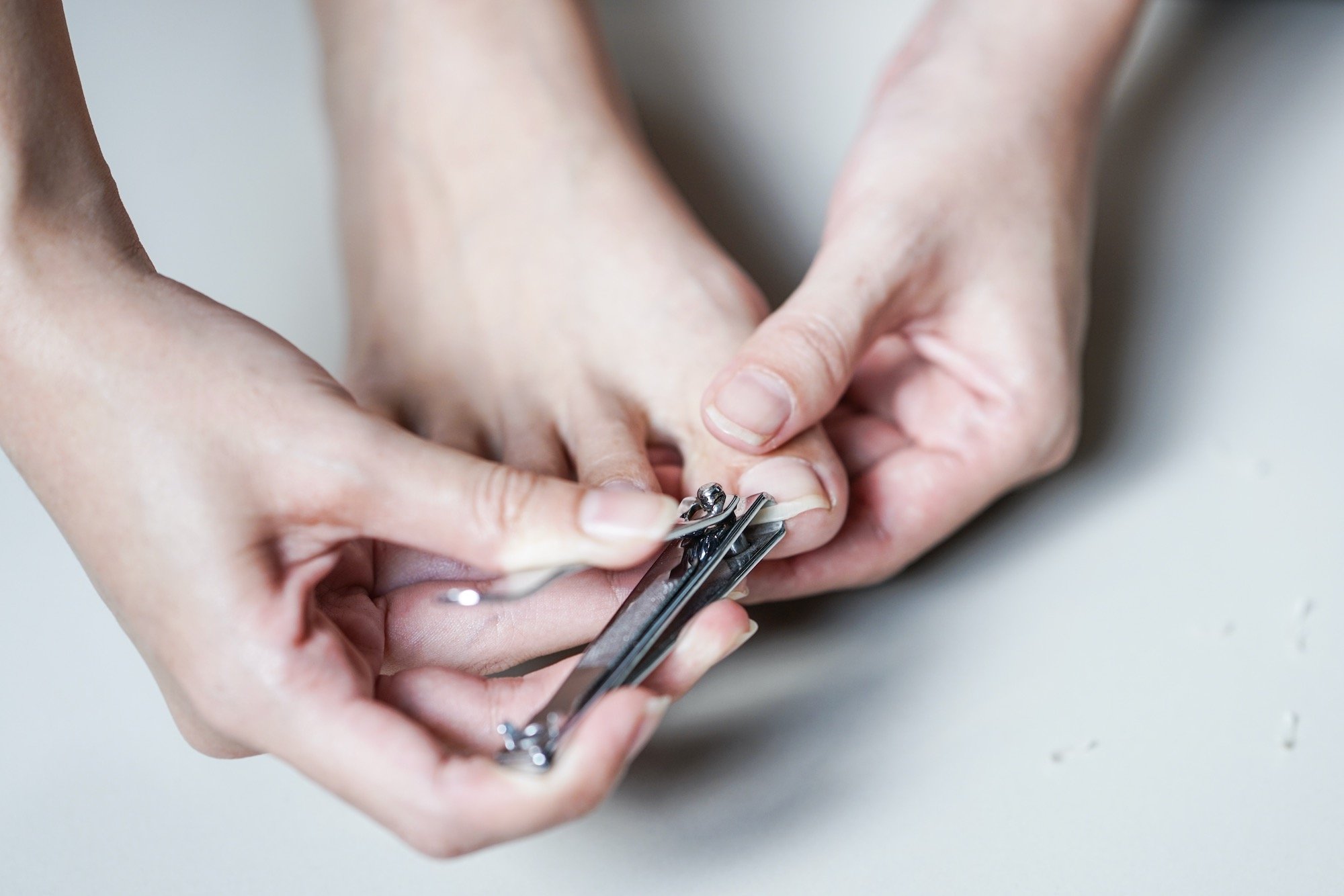 The health care provider may make a hole in the nail to drain blood and give a tetanus shot if needed.
The health care provider may make a hole in the nail to drain blood and give a tetanus shot if needed.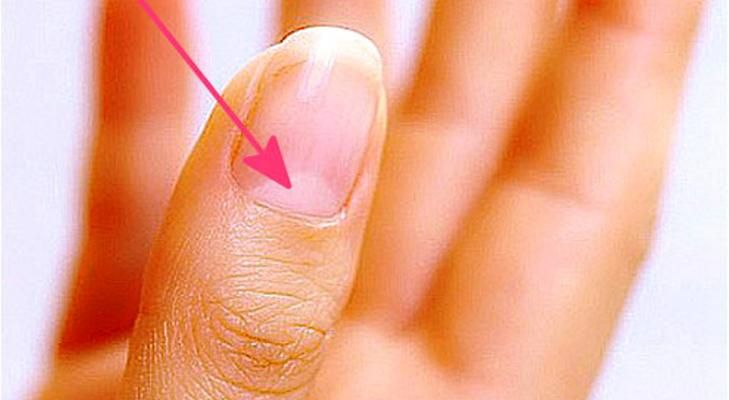 They will then use stitches to secure the skin graft.
They will then use stitches to secure the skin graft.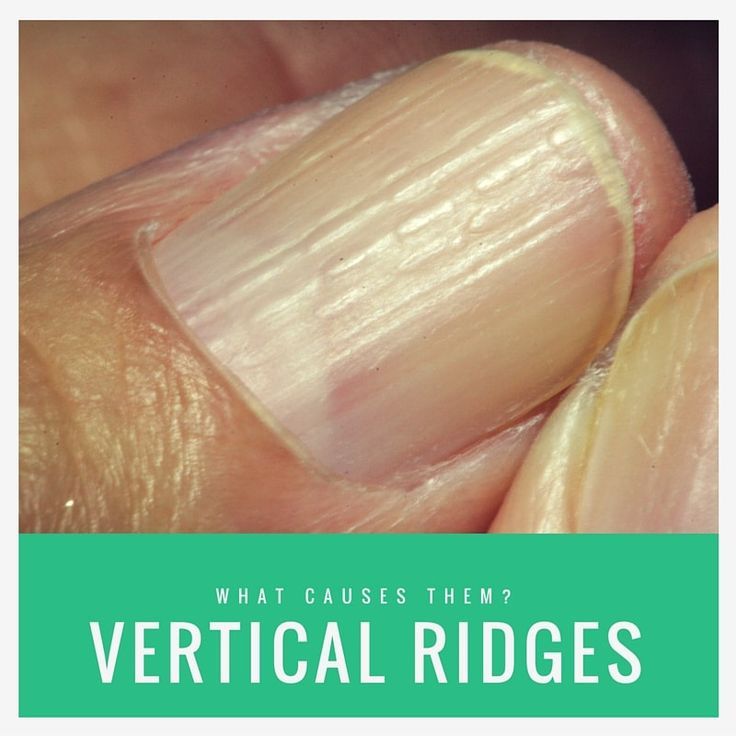 There are bones, tendons, ligaments, cartilage, and muscles in the fingers. These can all be injured.
There are bones, tendons, ligaments, cartilage, and muscles in the fingers. These can all be injured. A scratch is an injury to the skin made by a sharp edge. For example, scratches can be caused by fingernails, a sharp nail, a piece of metal, or a branch of a tree or bush. A paper cut is a scratch from the edge of a piece of paper. This can usually be treated at home.
A scratch is an injury to the skin made by a sharp edge. For example, scratches can be caused by fingernails, a sharp nail, a piece of metal, or a branch of a tree or bush. A paper cut is a scratch from the edge of a piece of paper. This can usually be treated at home. Usually a person with a finger broken finger just needs a splint. A person with a bad fracture may need surgery.
Usually a person with a finger broken finger just needs a splint. A person with a bad fracture may need surgery.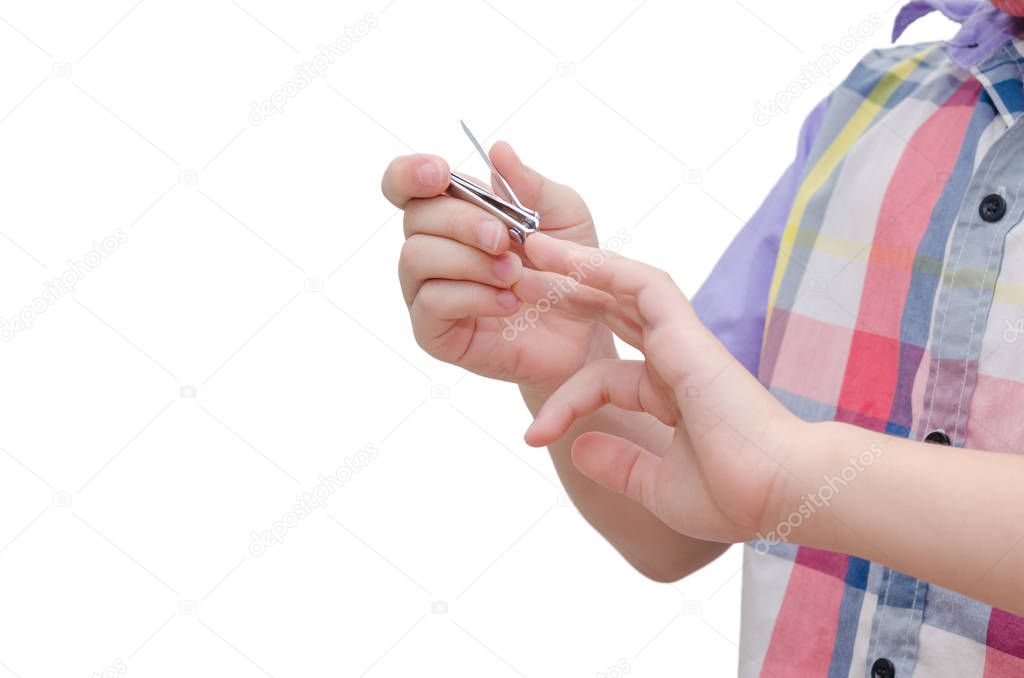 It can happen when a heavy object like a hammer hits the finger. The more blood under the nail, the more it hurts. If the pain is severe, the pressure may need to be released to help the pain go away. This is best done by a doctor or other trained provider. It involves making a small hole in the nail to release the blood. A rule of thumb is that this may be needed if blood is under more than half of the nail. The fingernail sometimes falls off after this type of injury. If it does, a new nail will grow back in 6 to 12 weeks.
It can happen when a heavy object like a hammer hits the finger. The more blood under the nail, the more it hurts. If the pain is severe, the pressure may need to be released to help the pain go away. This is best done by a doctor or other trained provider. It involves making a small hole in the nail to release the blood. A rule of thumb is that this may be needed if blood is under more than half of the nail. The fingernail sometimes falls off after this type of injury. If it does, a new nail will grow back in 6 to 12 weeks.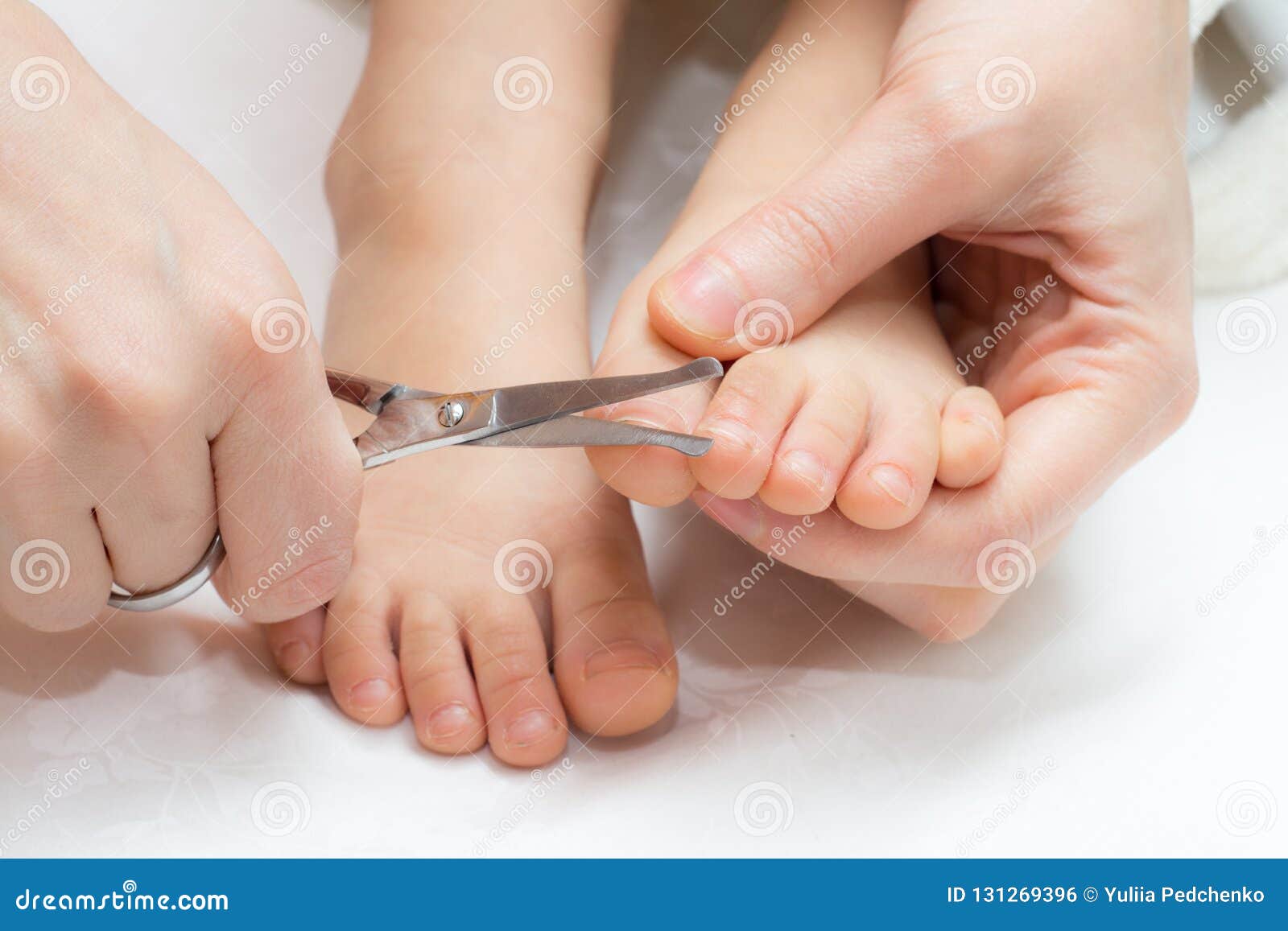 It may be worse than any pain you have had before. It keeps you from doing any normal activities. Pain score is 8-10 on a scale of 0 to 10.
It may be worse than any pain you have had before. It keeps you from doing any normal activities. Pain score is 8-10 on a scale of 0 to 10.
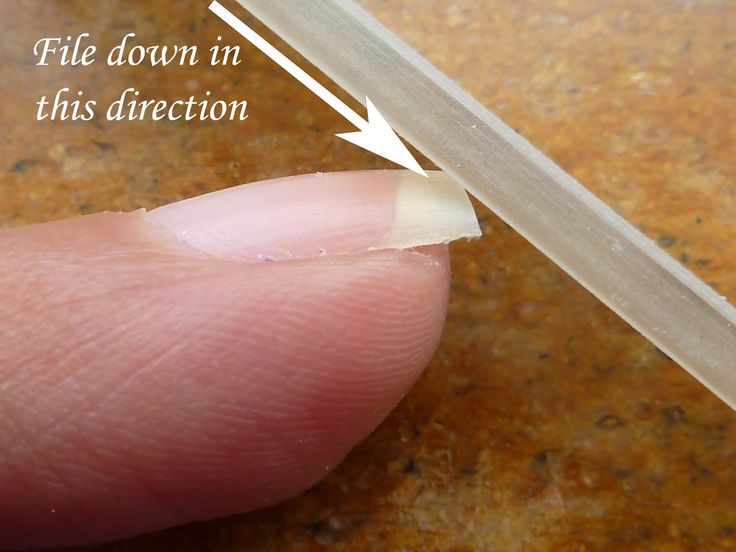
 Cover it with an adhesive bandage (Band-Aid) and change daily.
Cover it with an adhesive bandage (Band-Aid) and change daily.